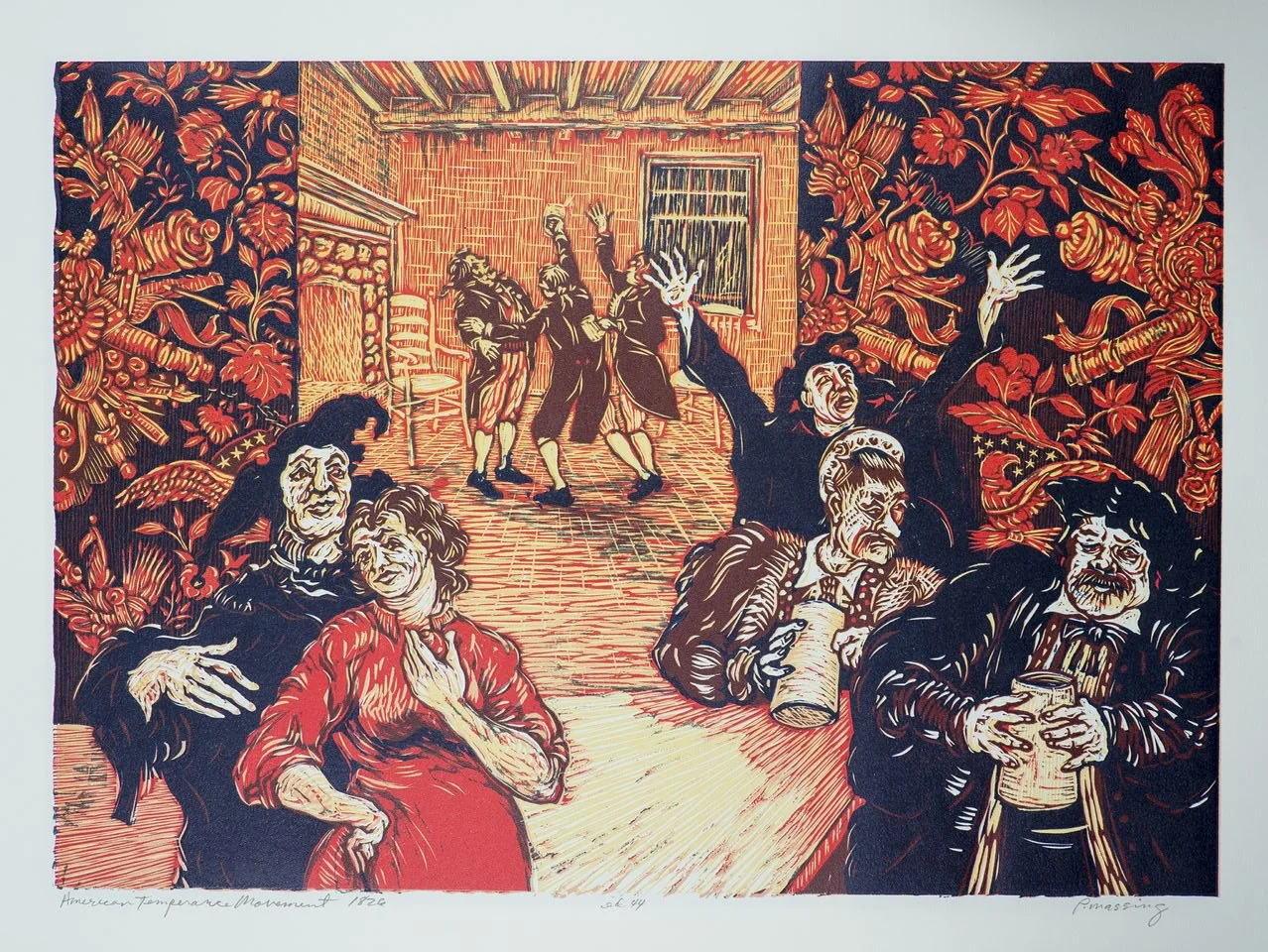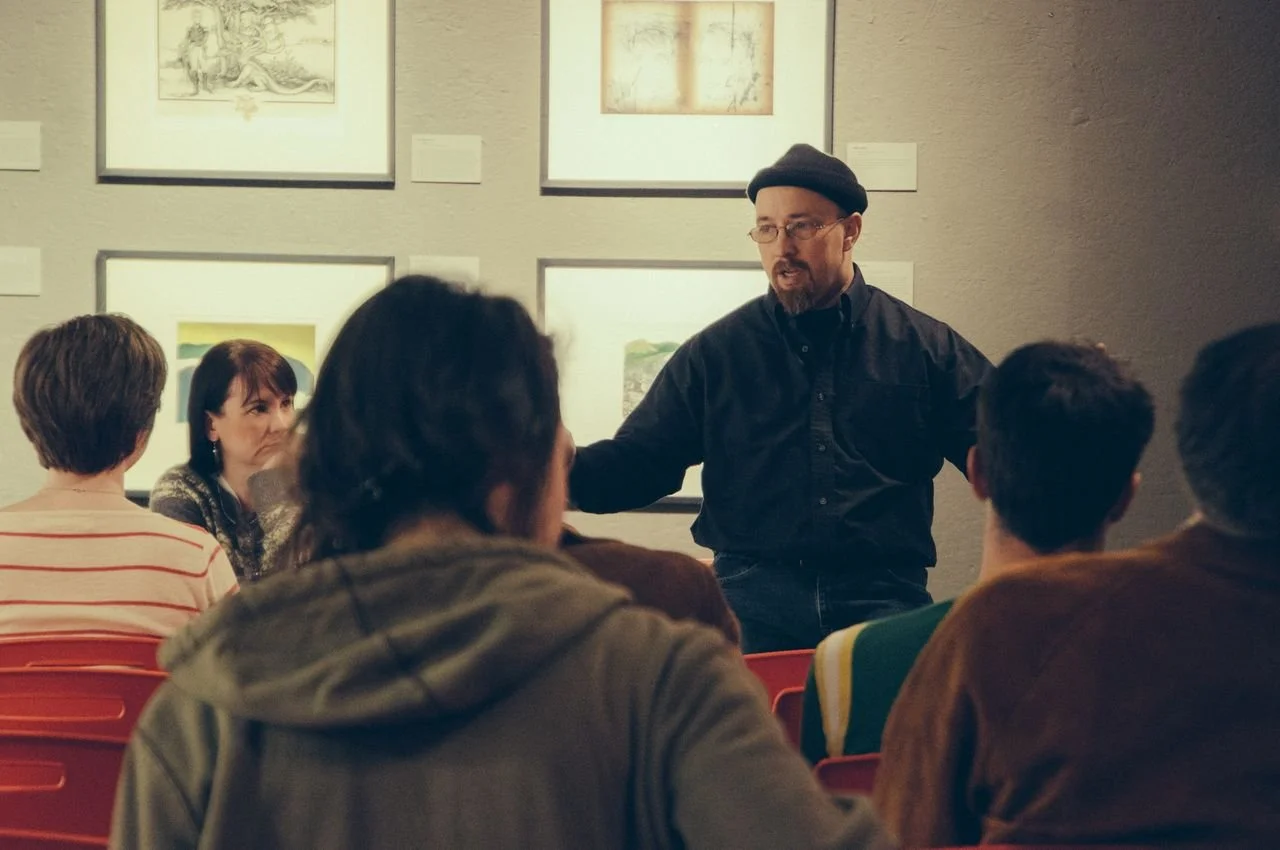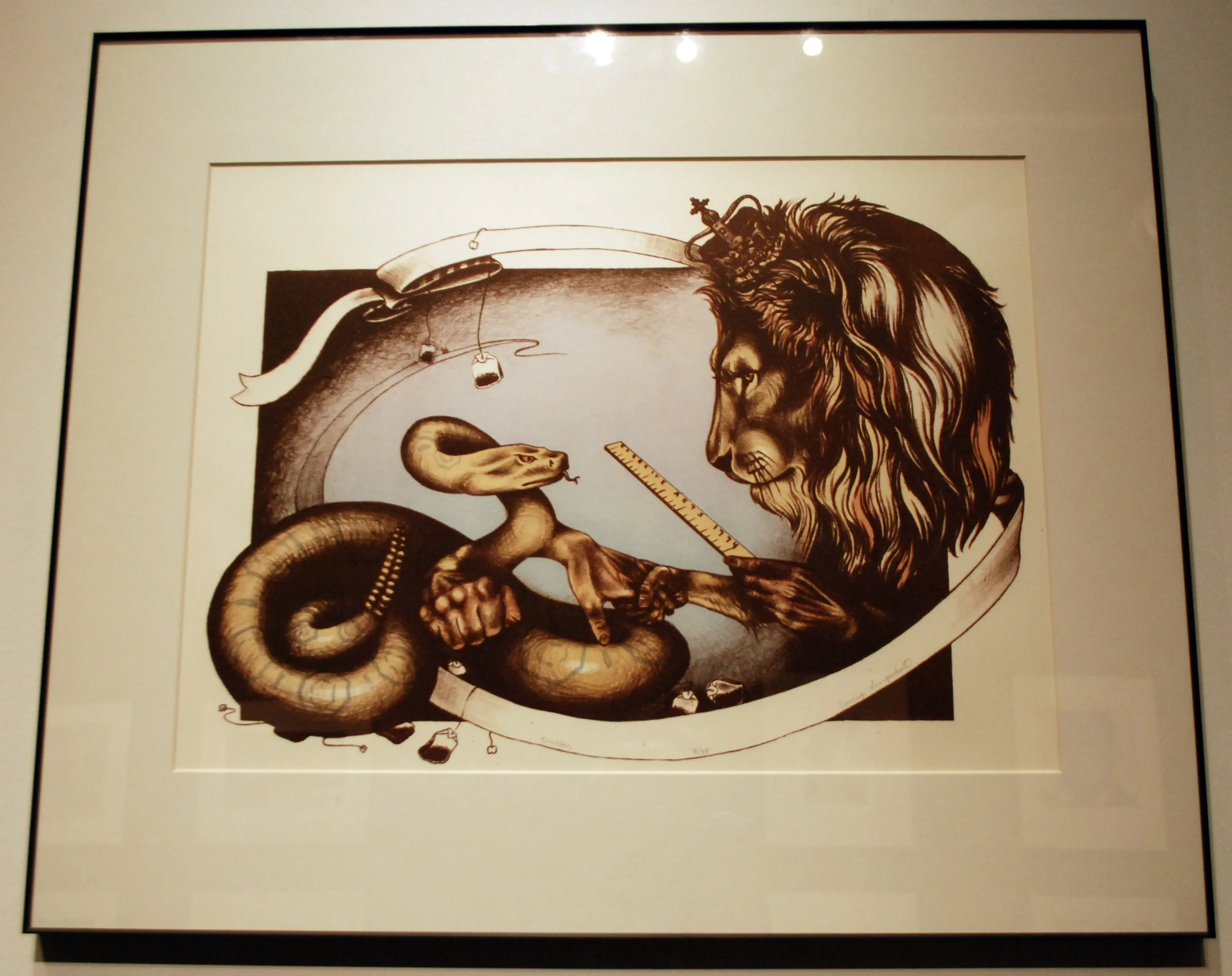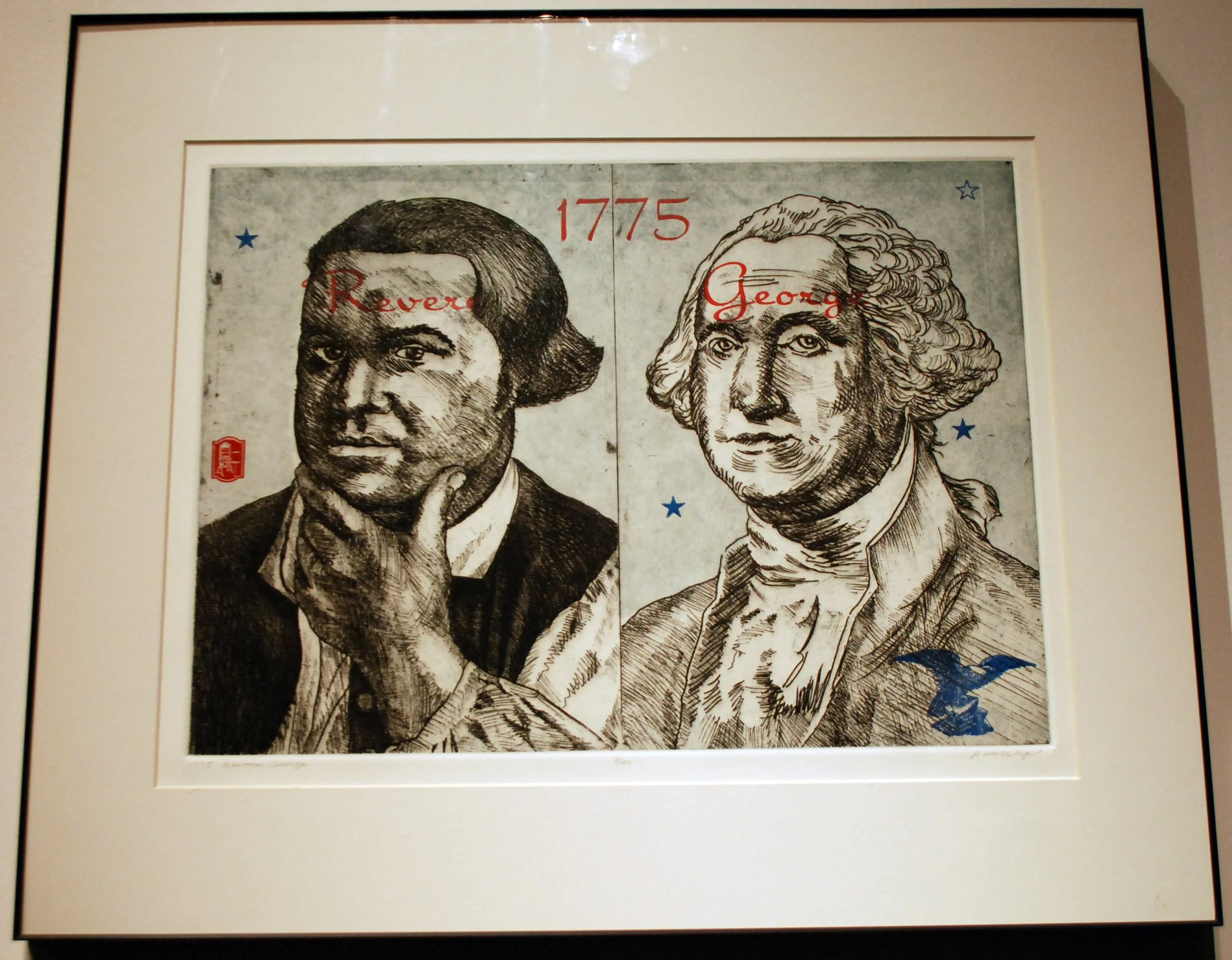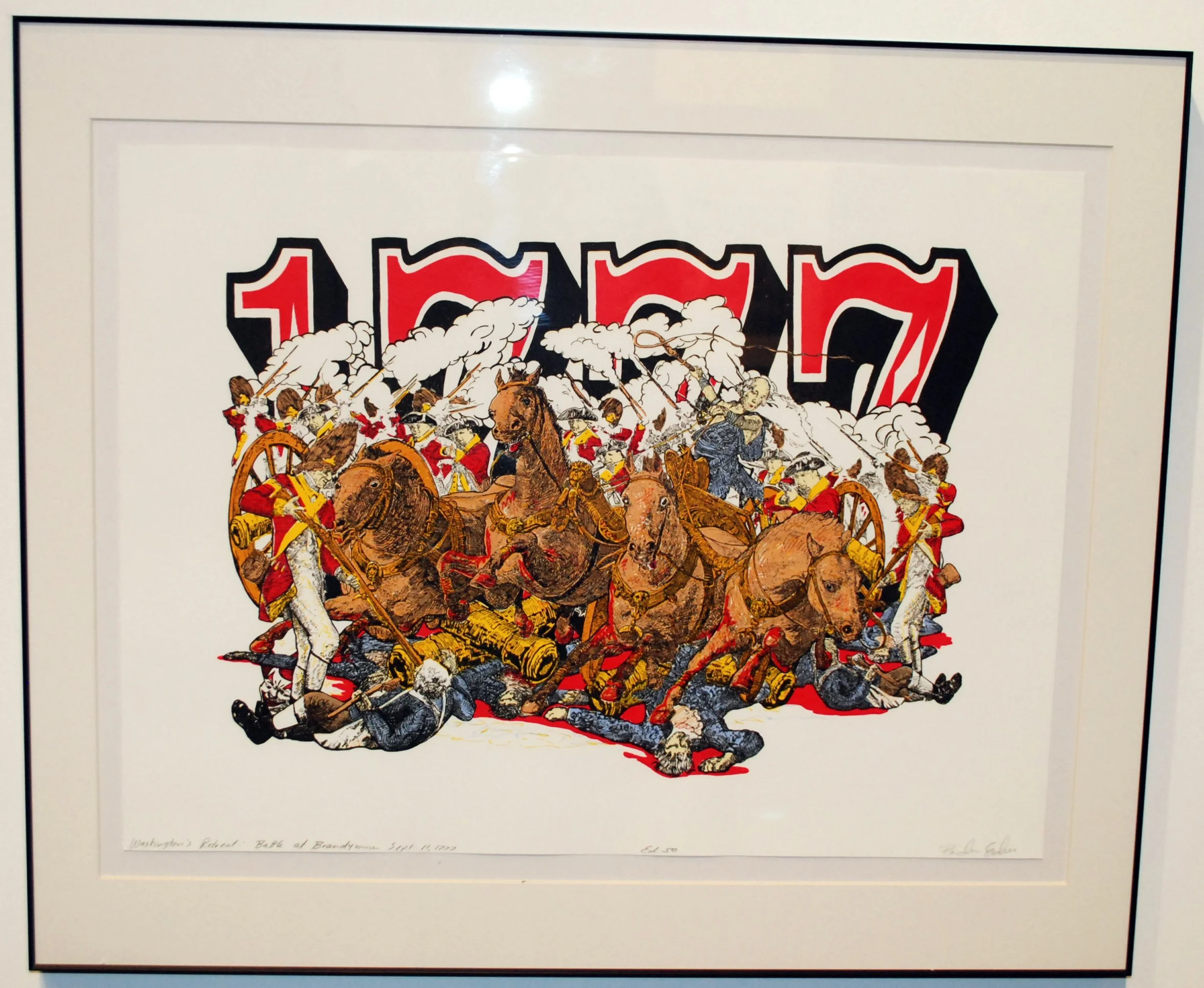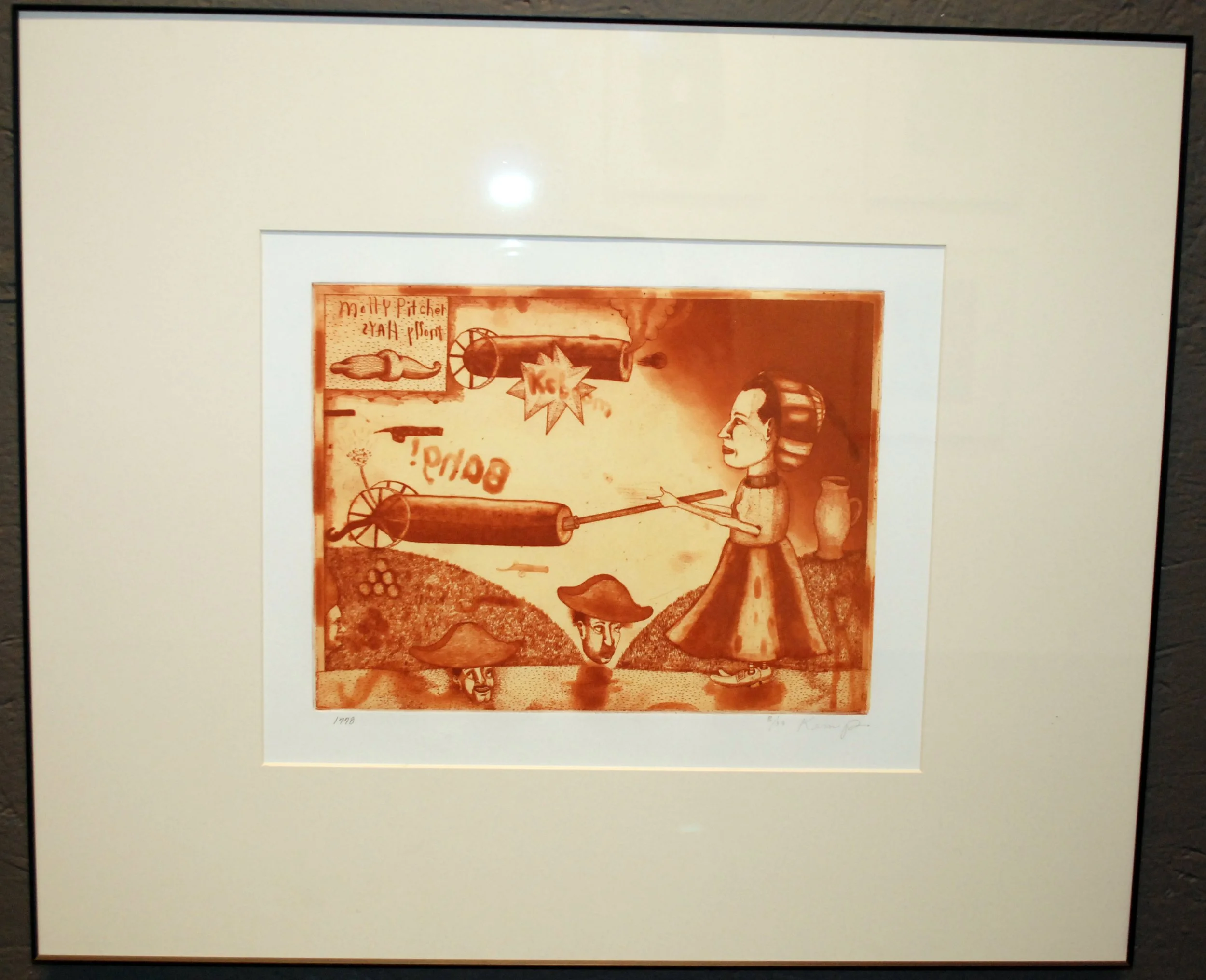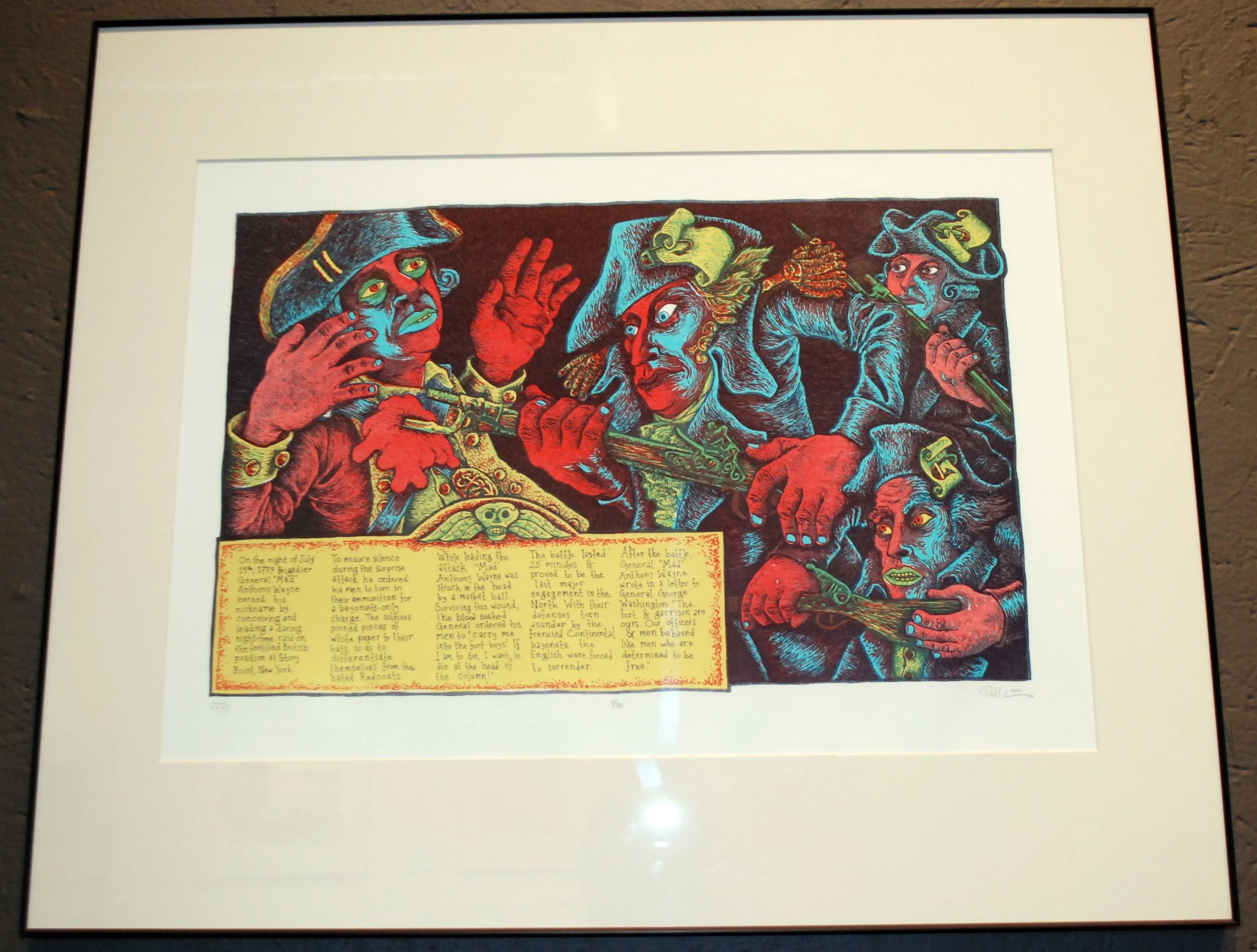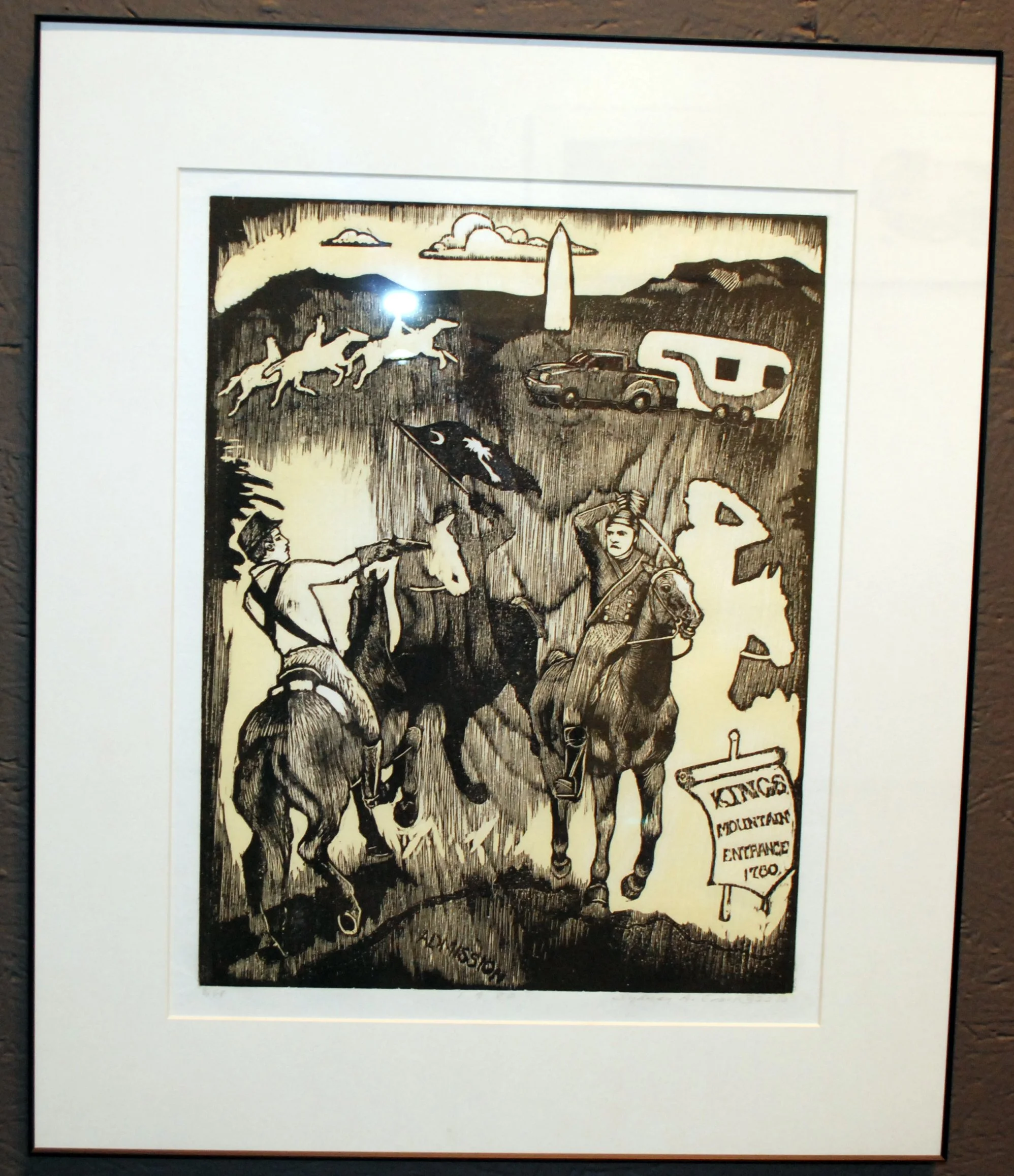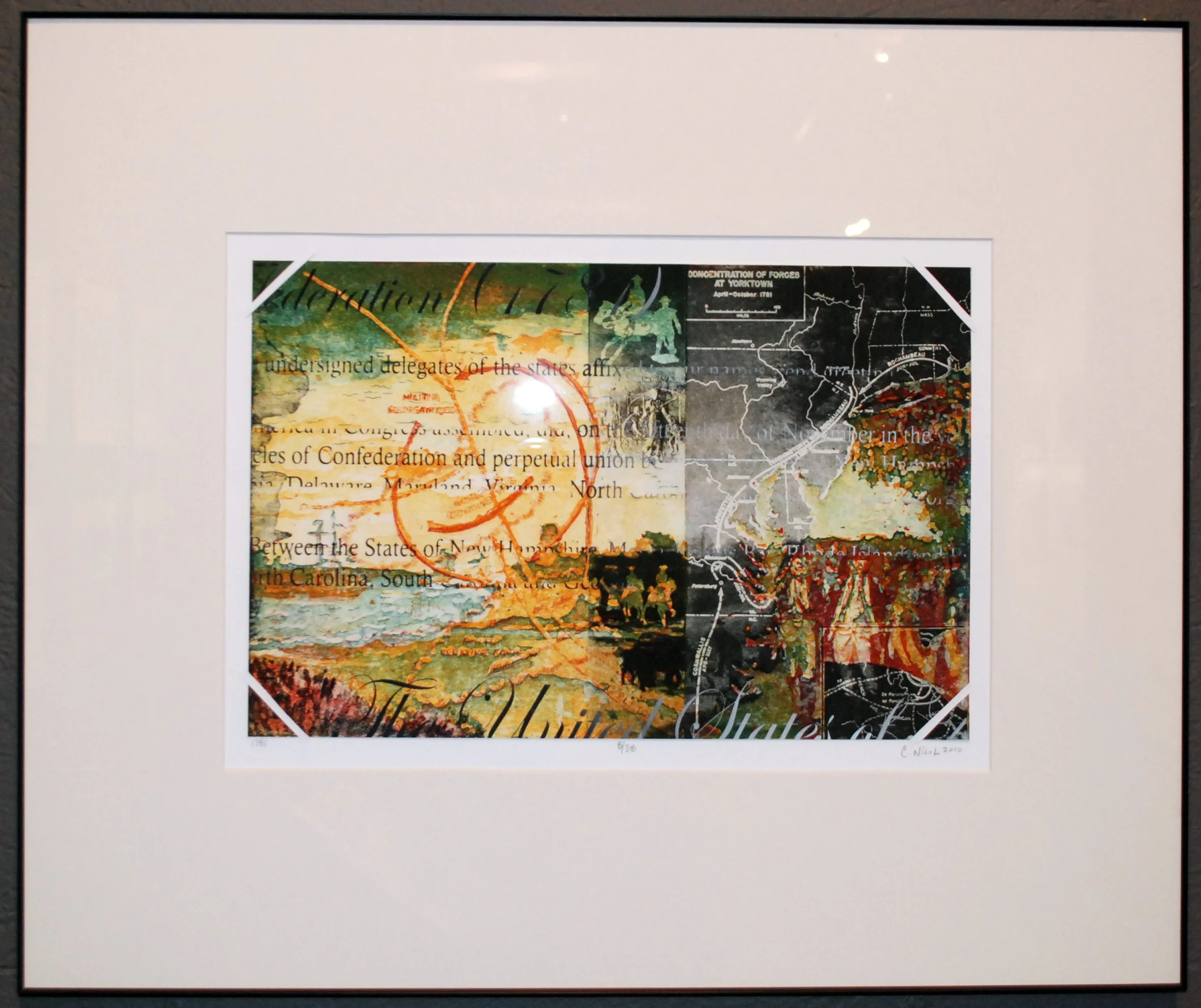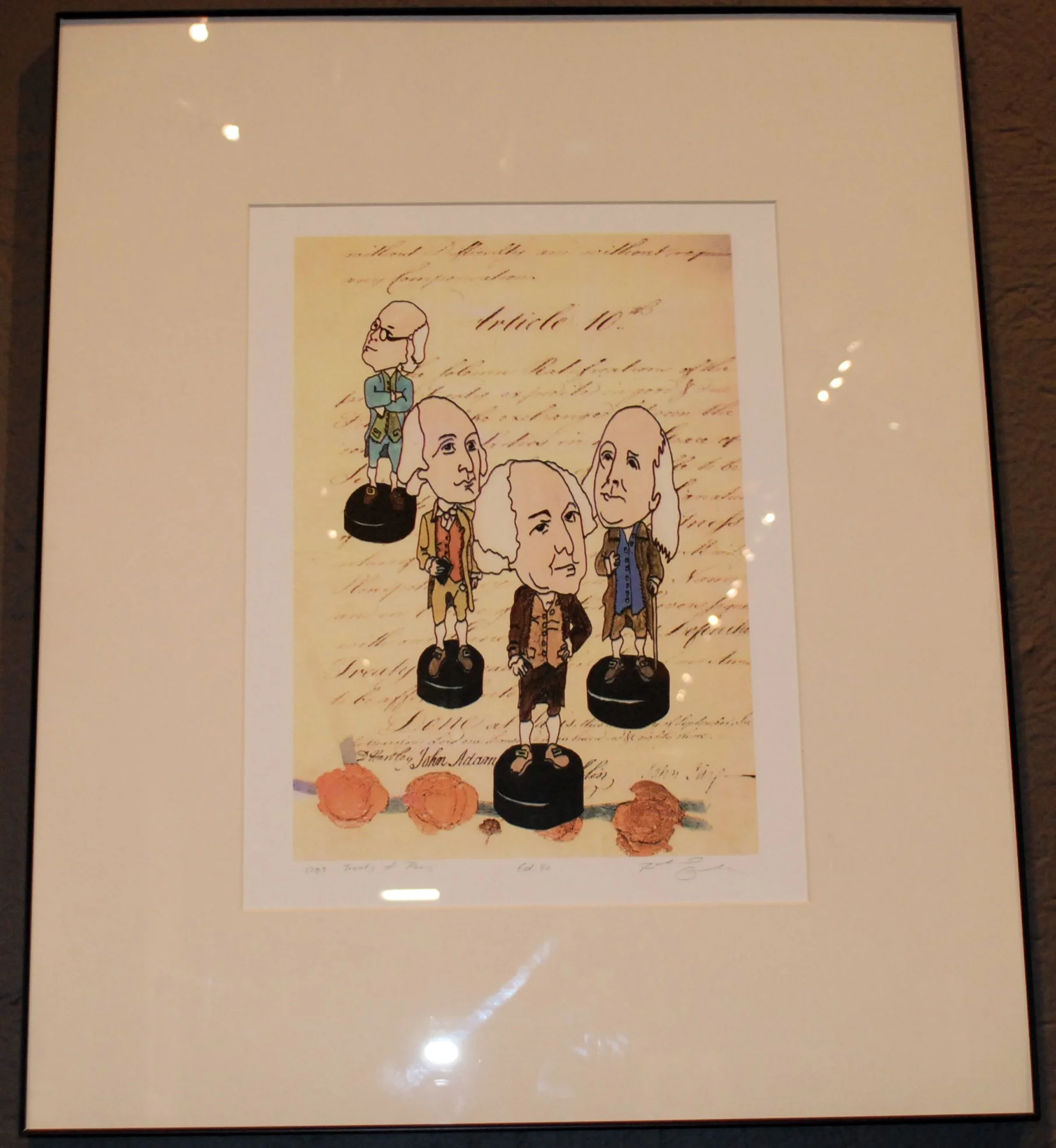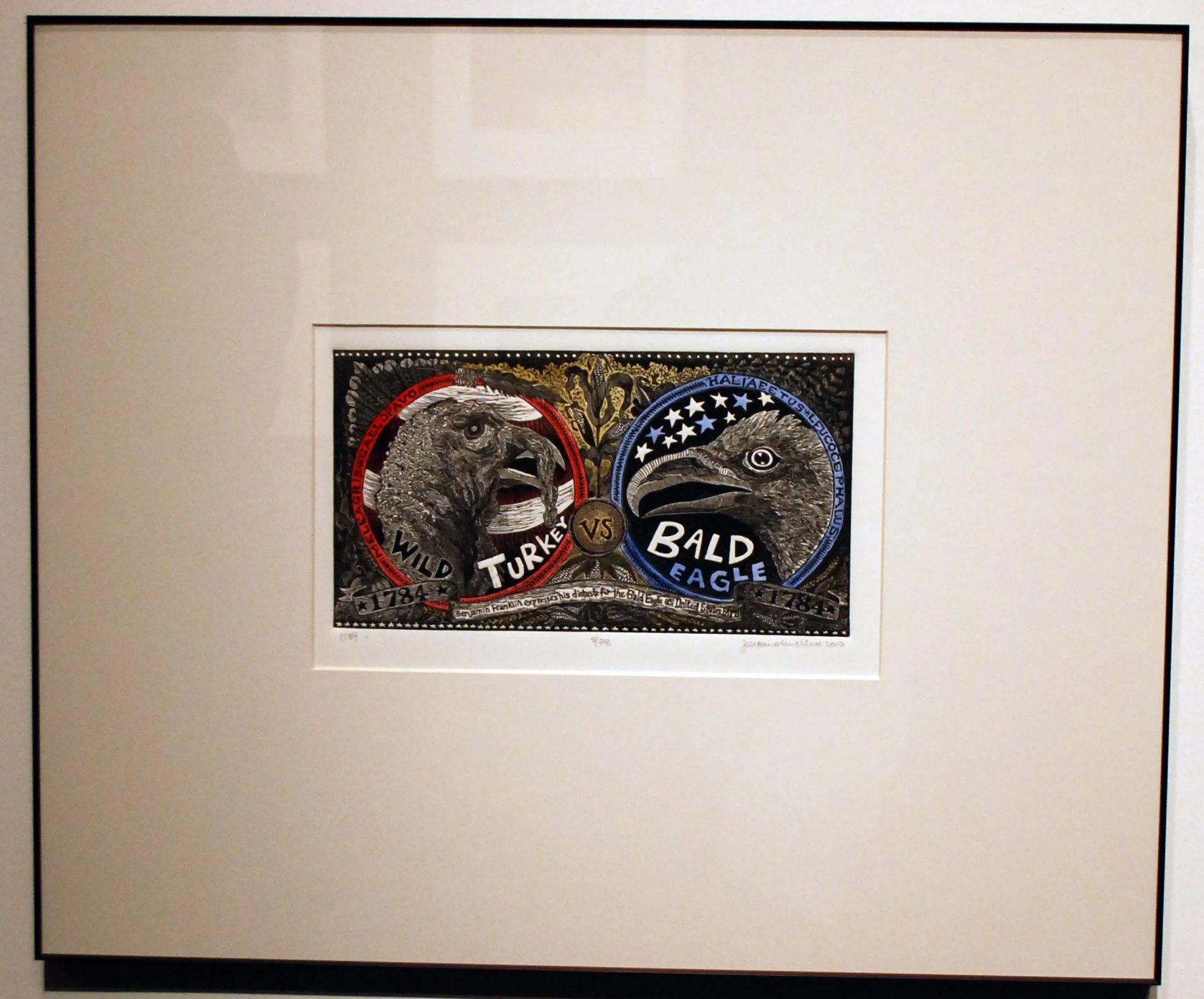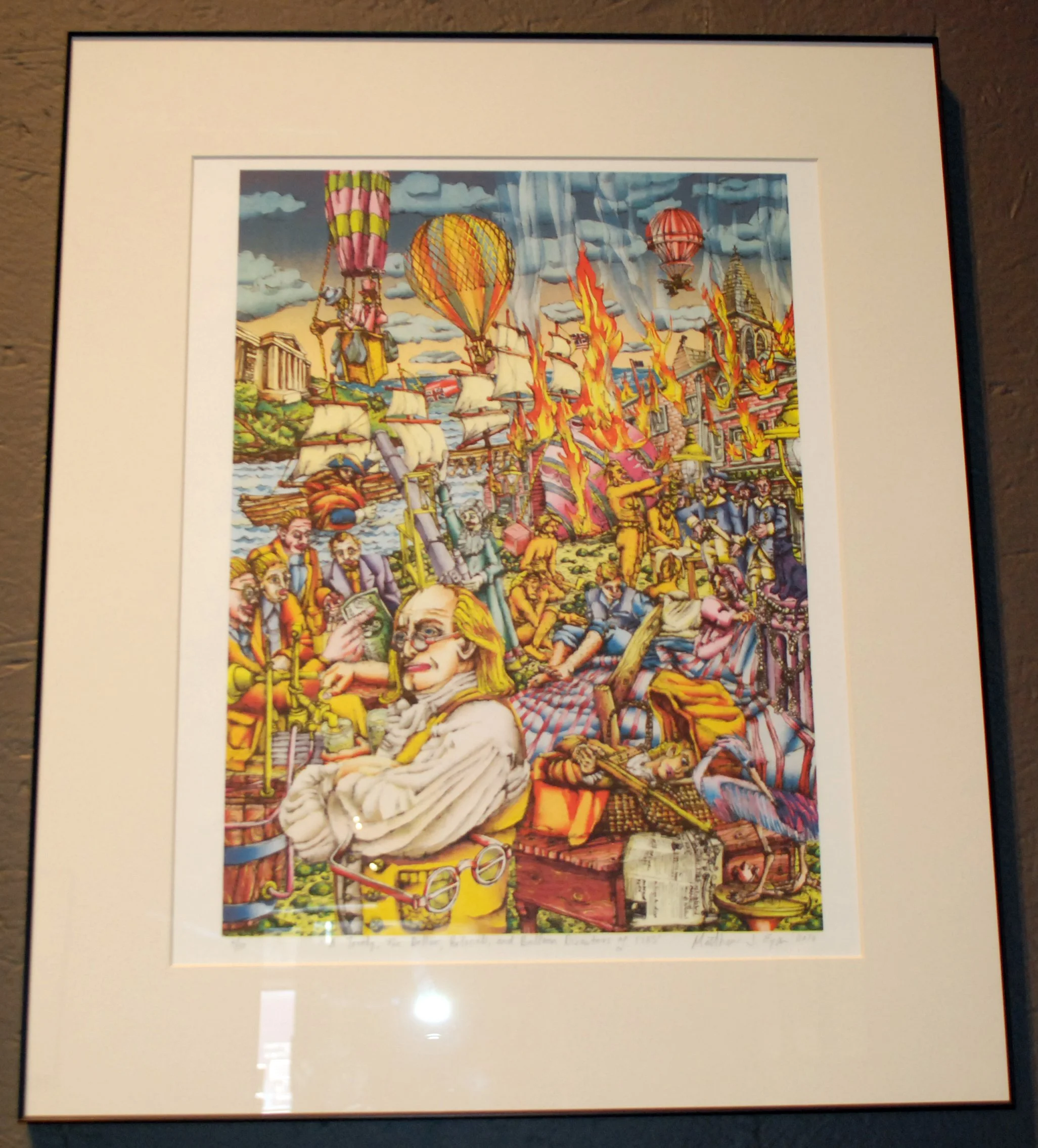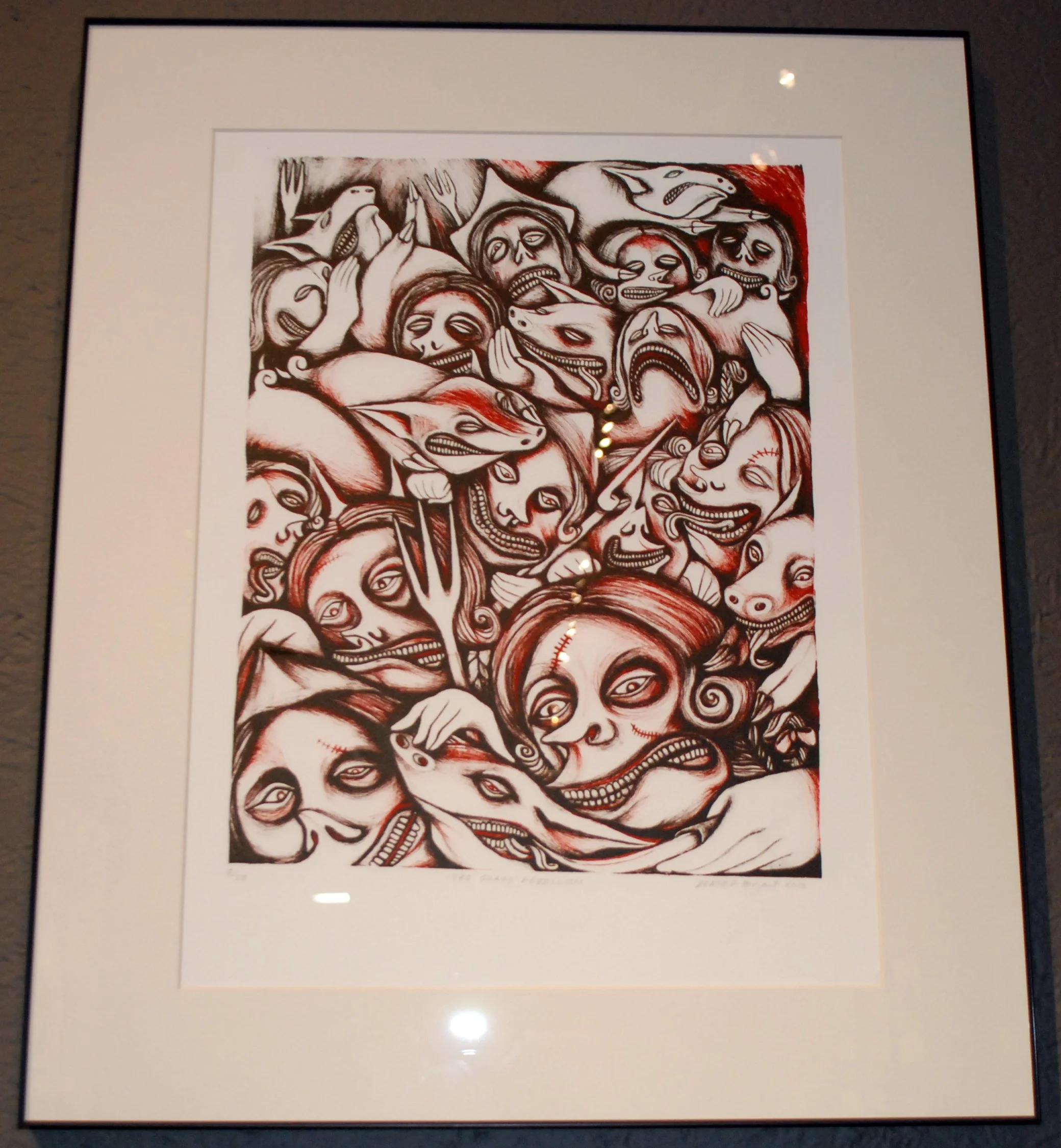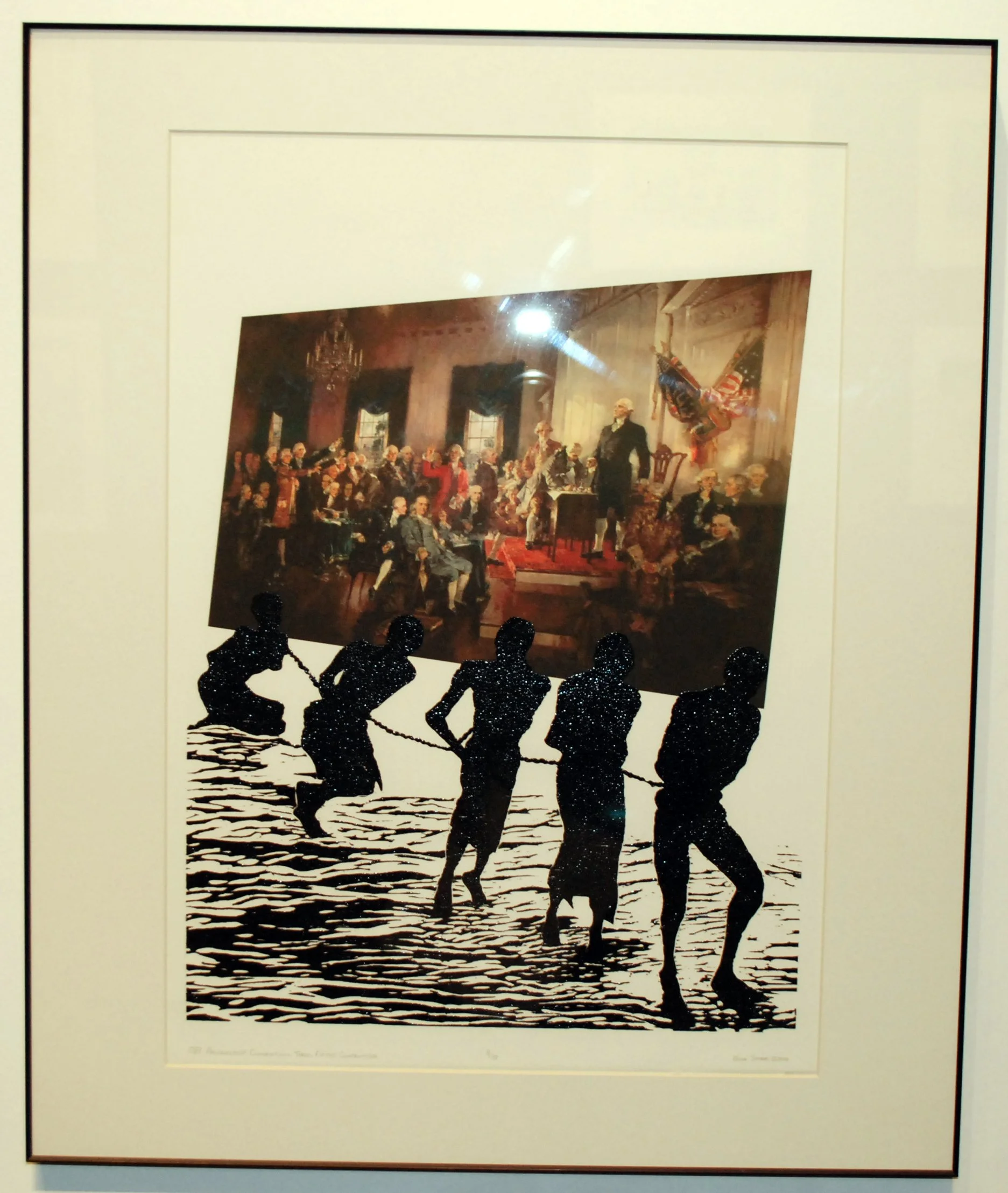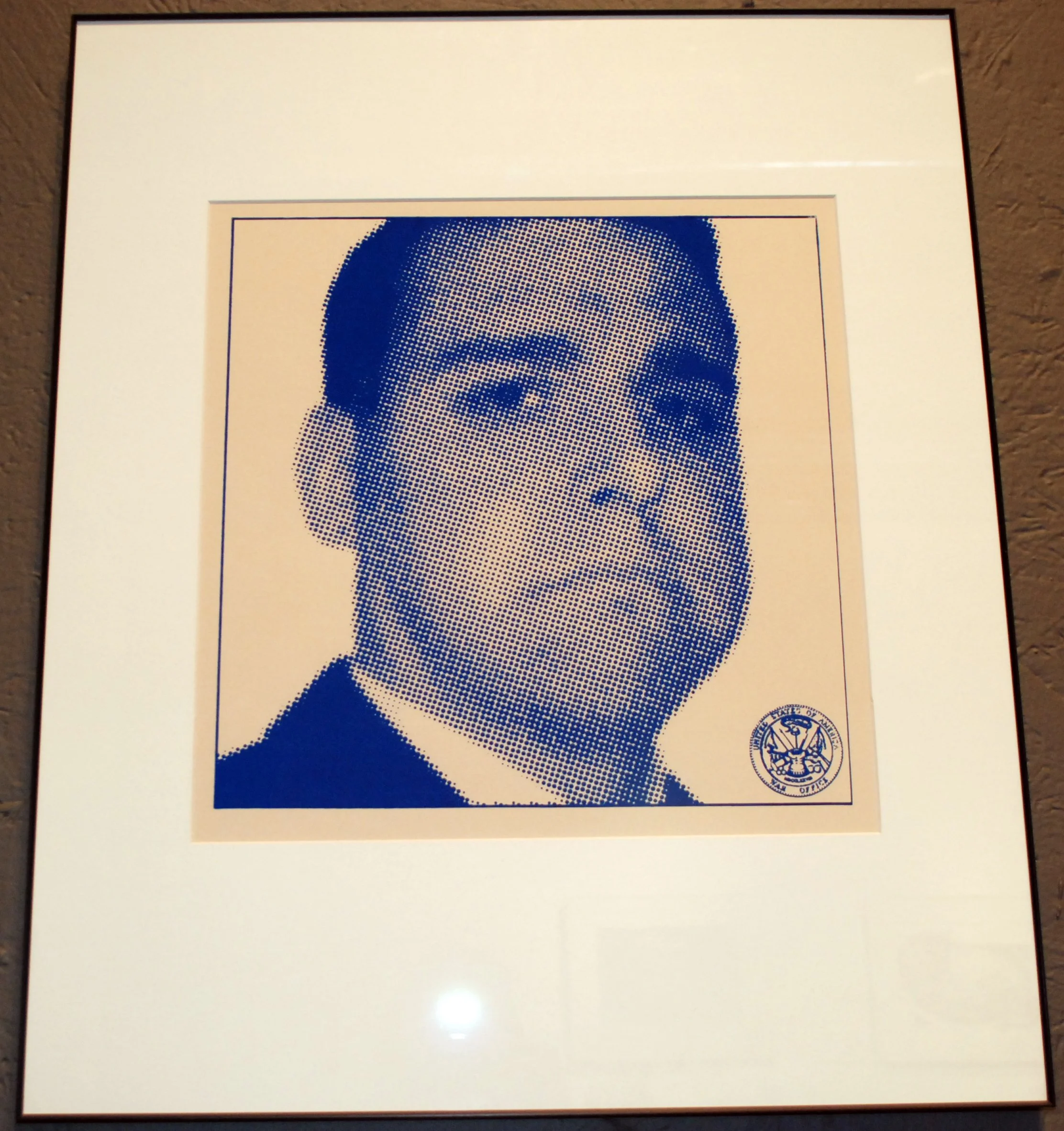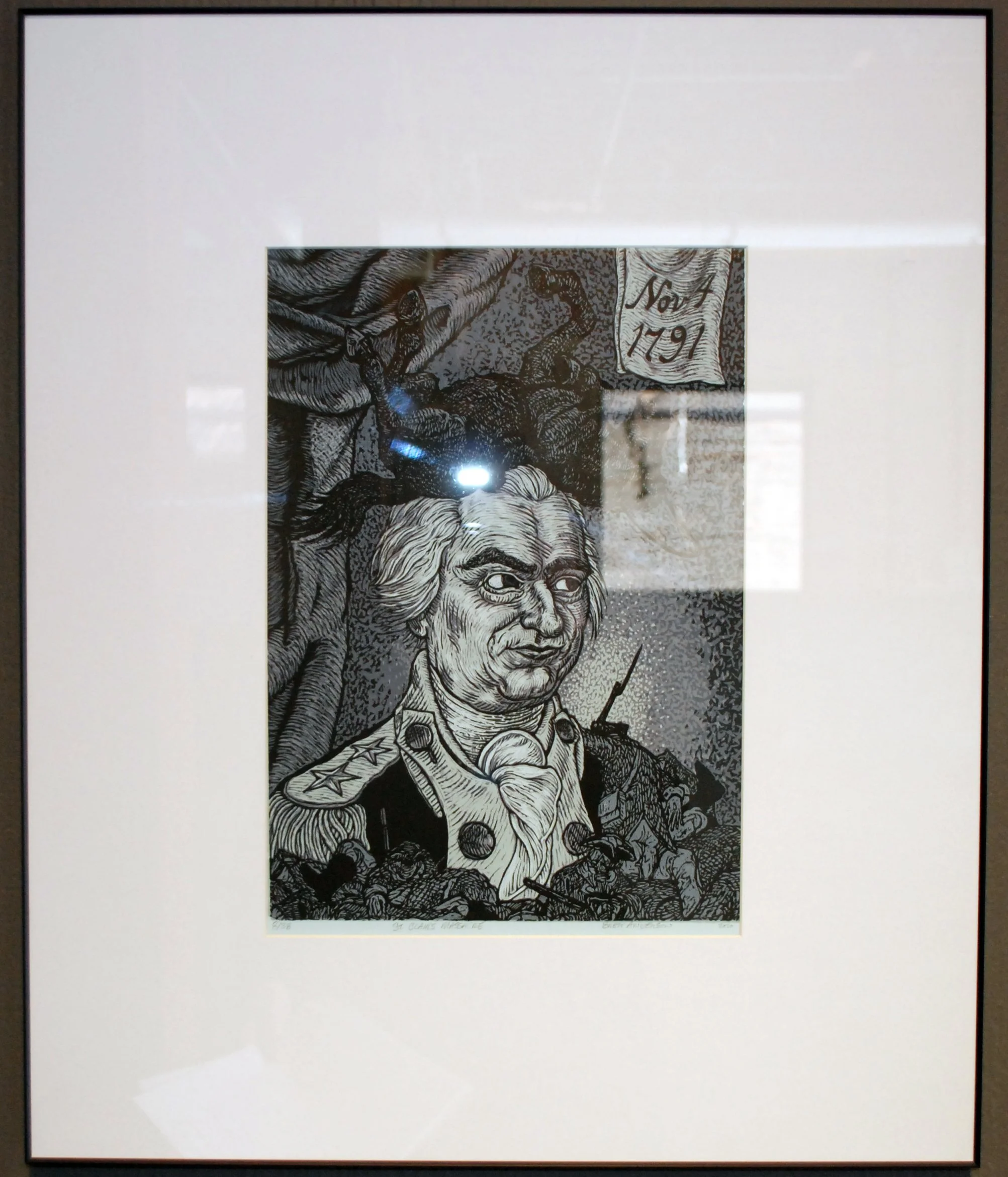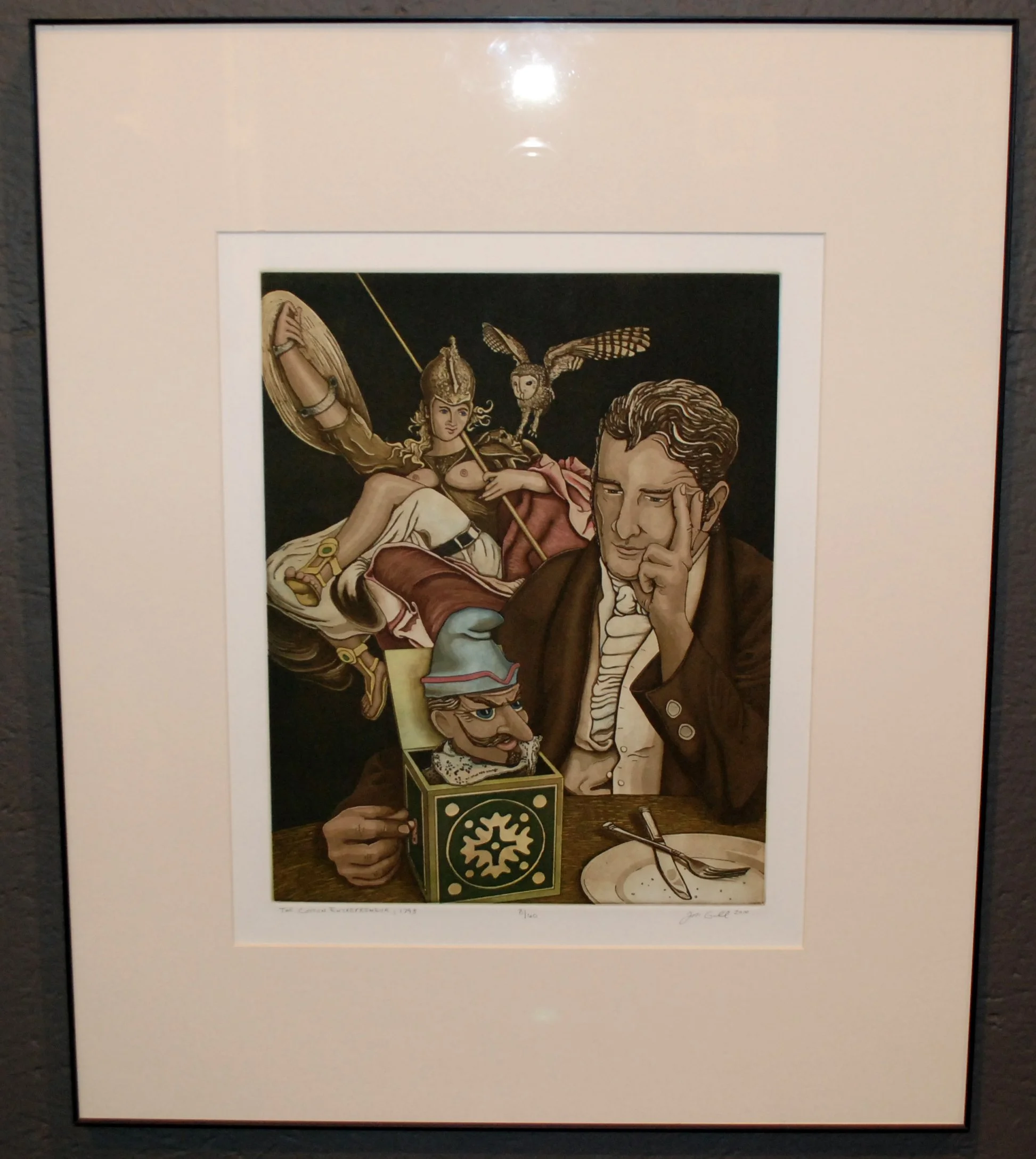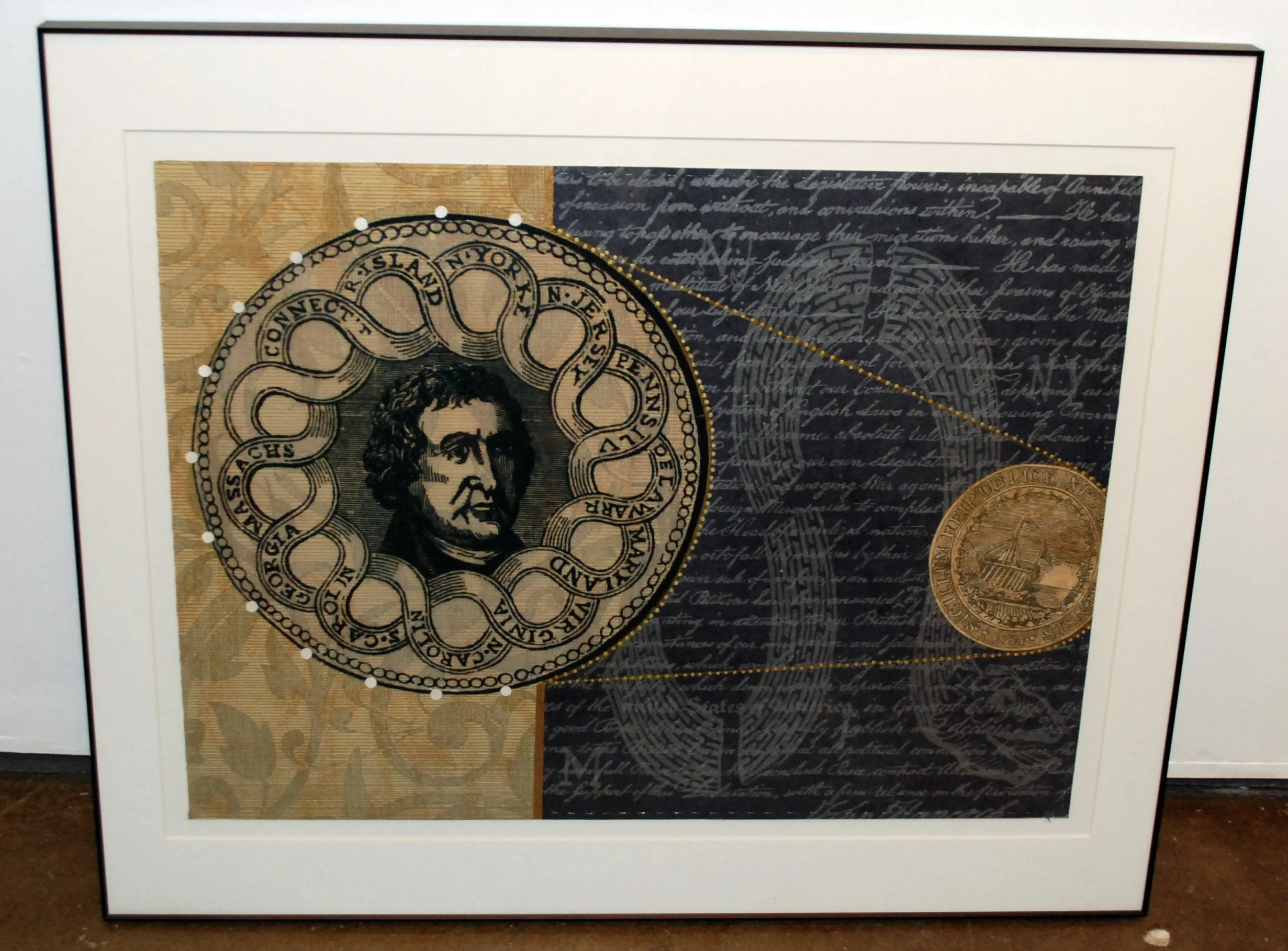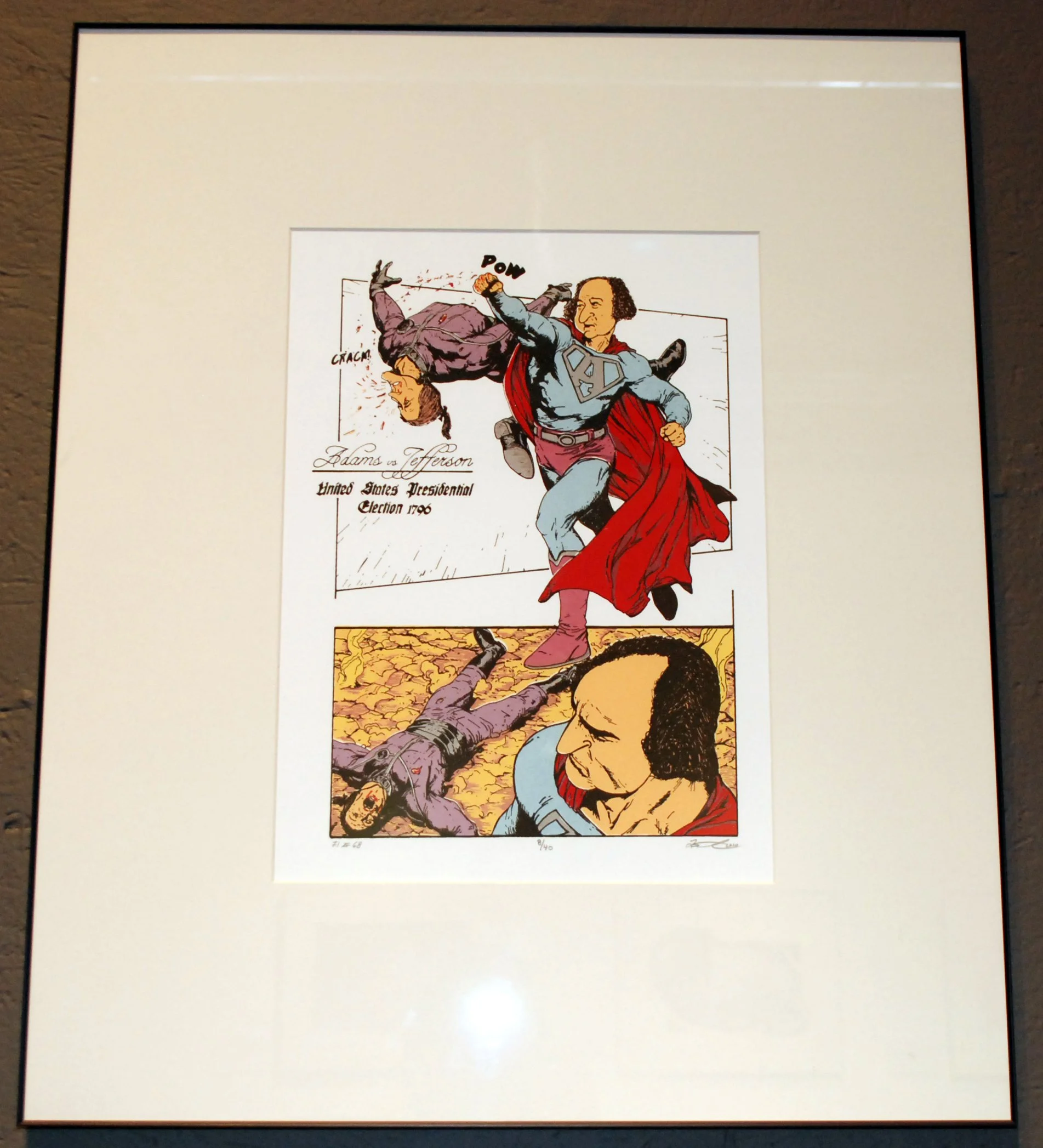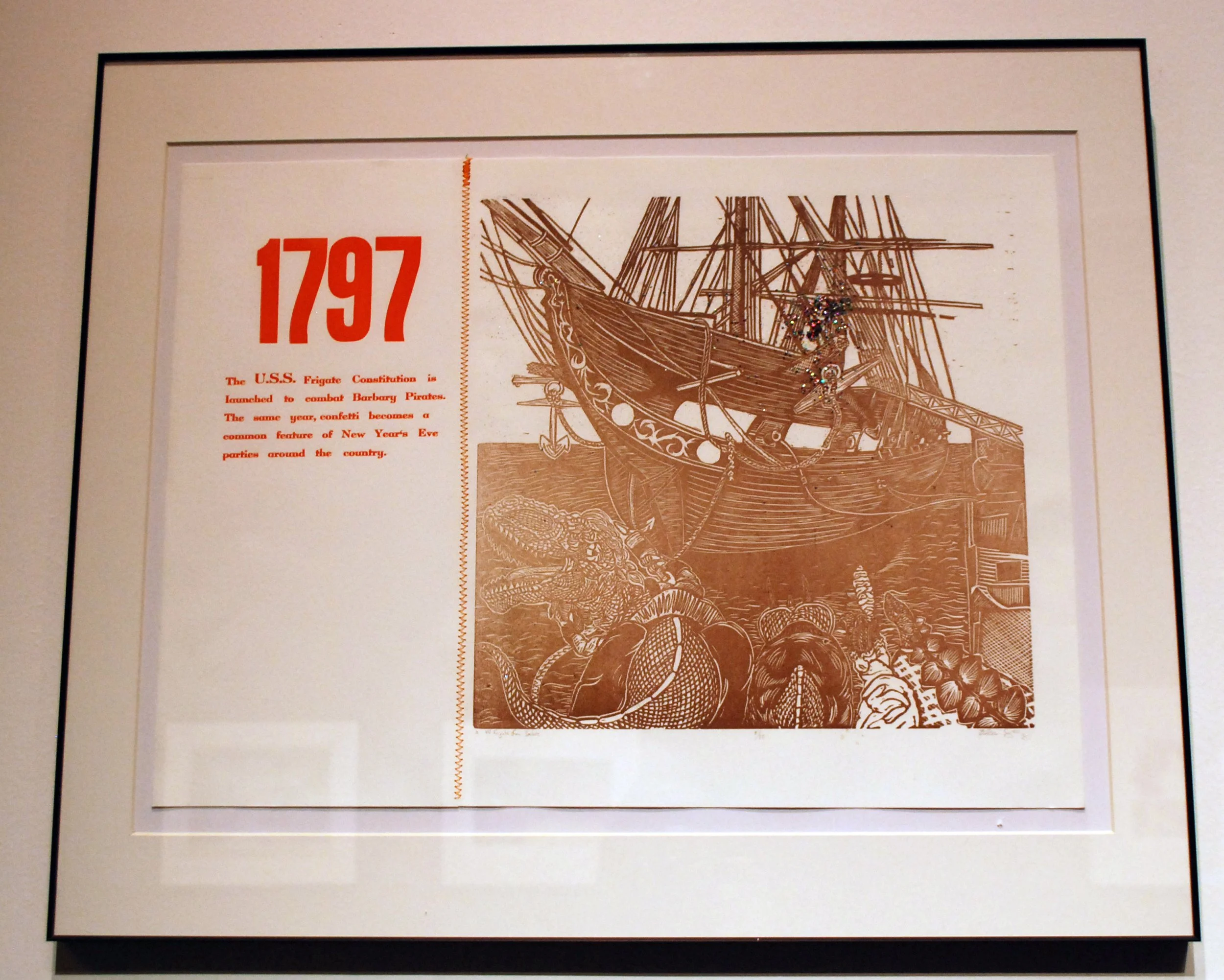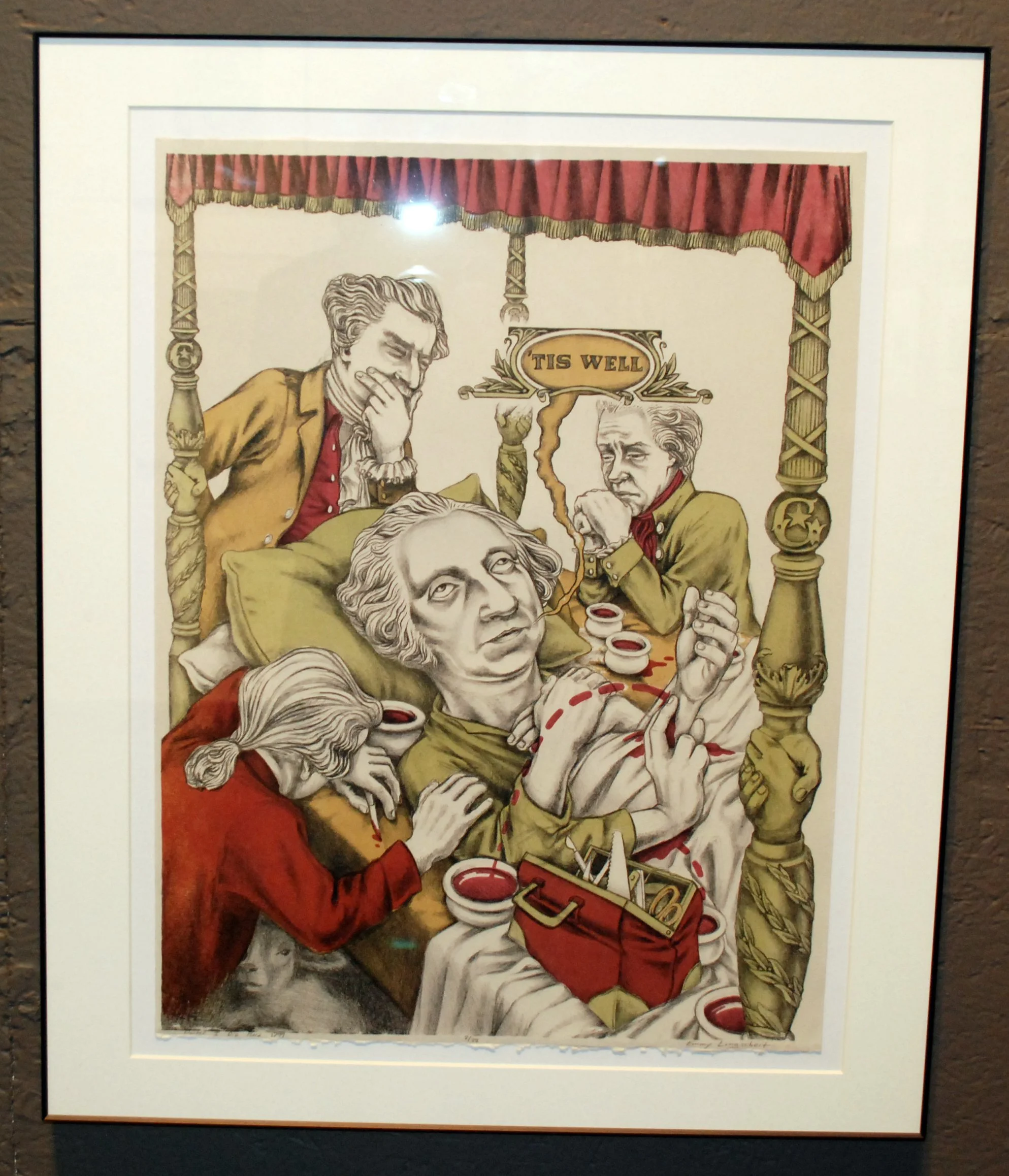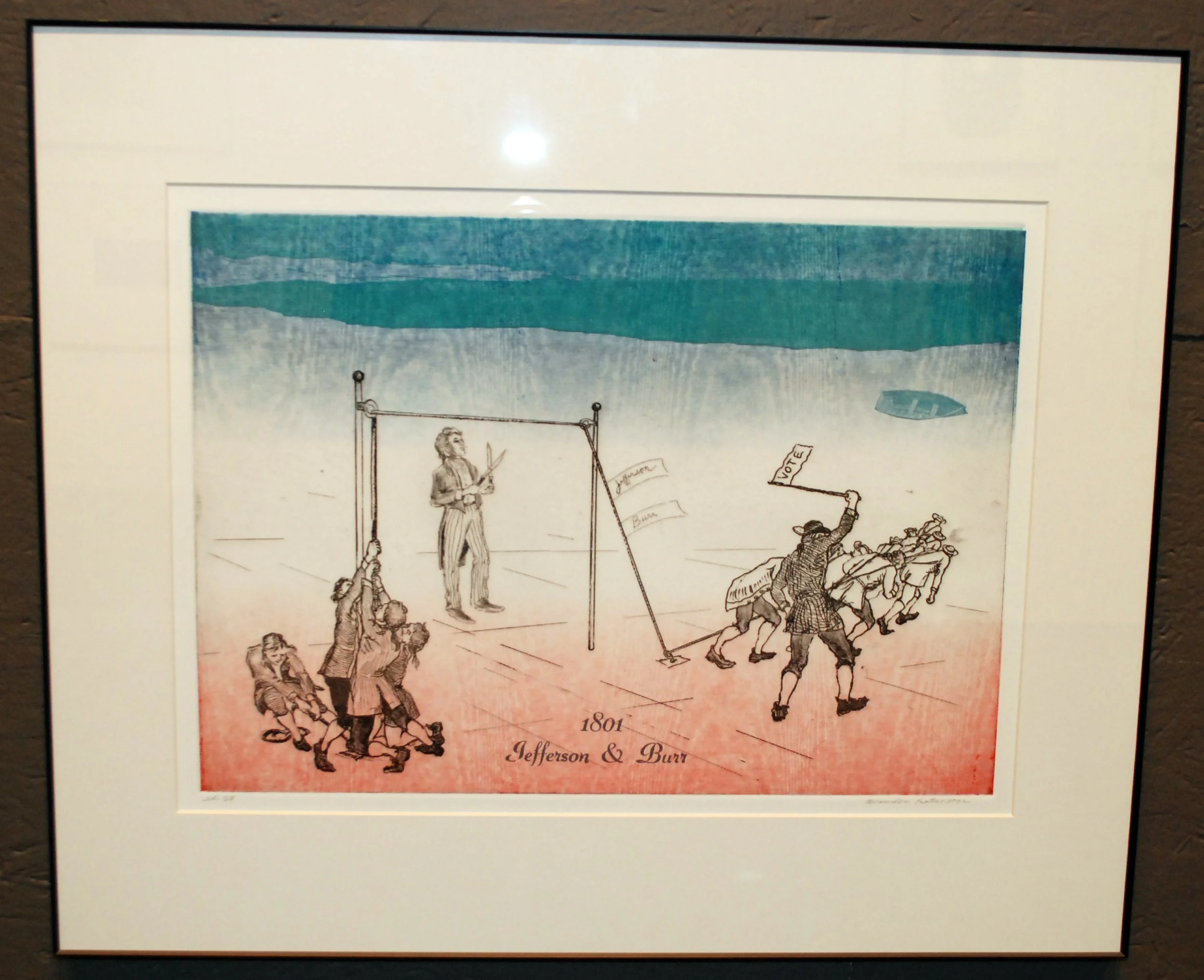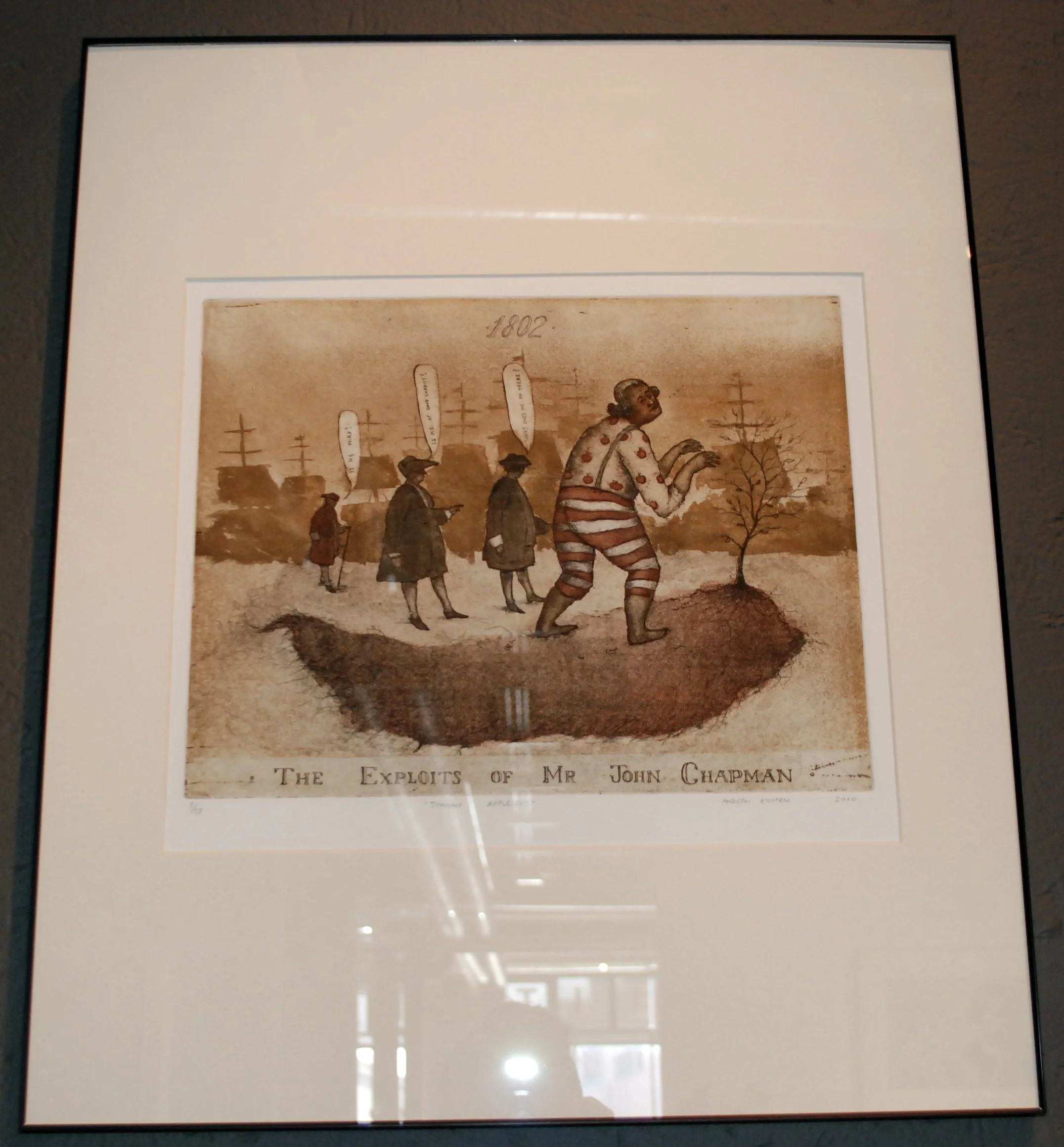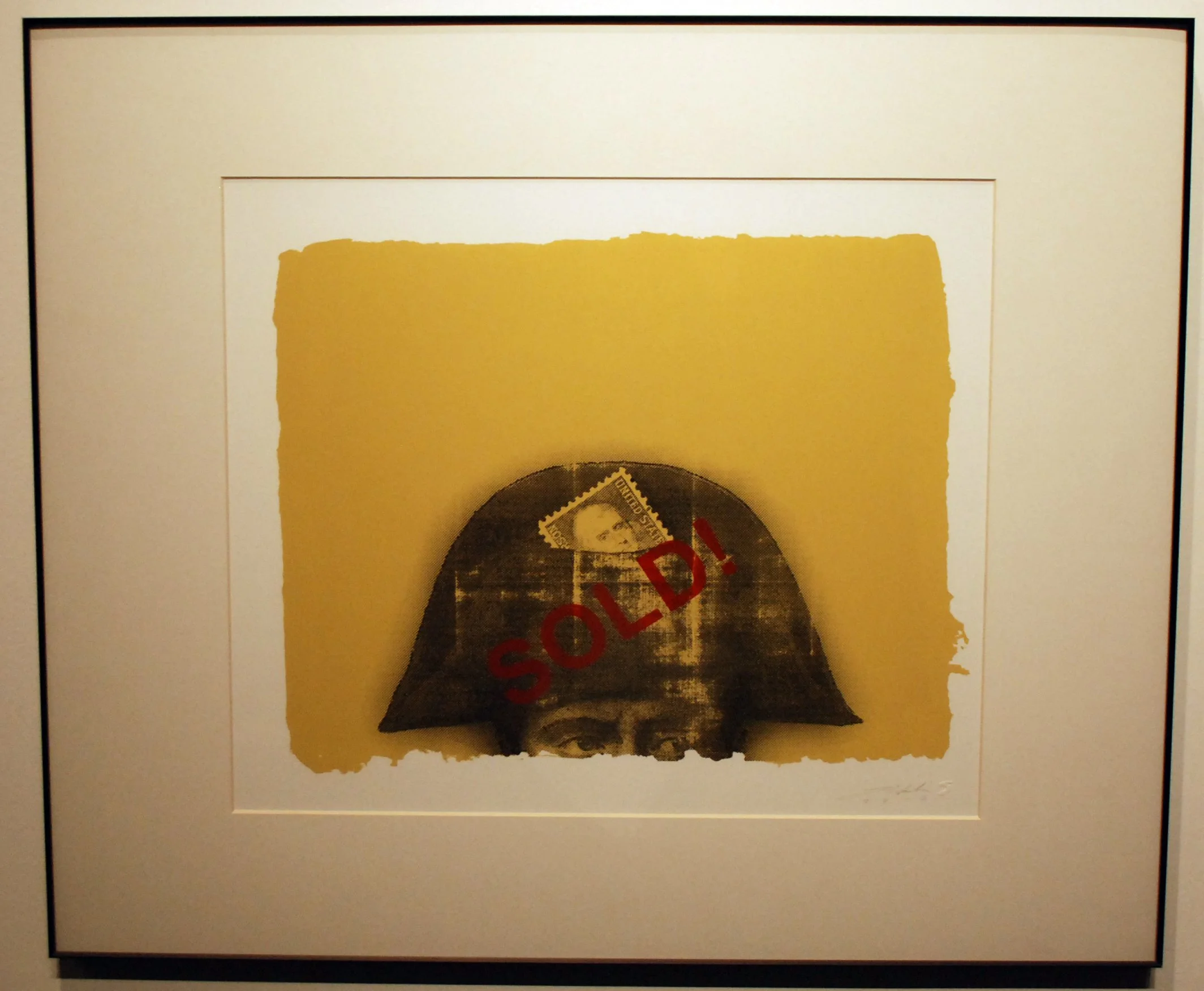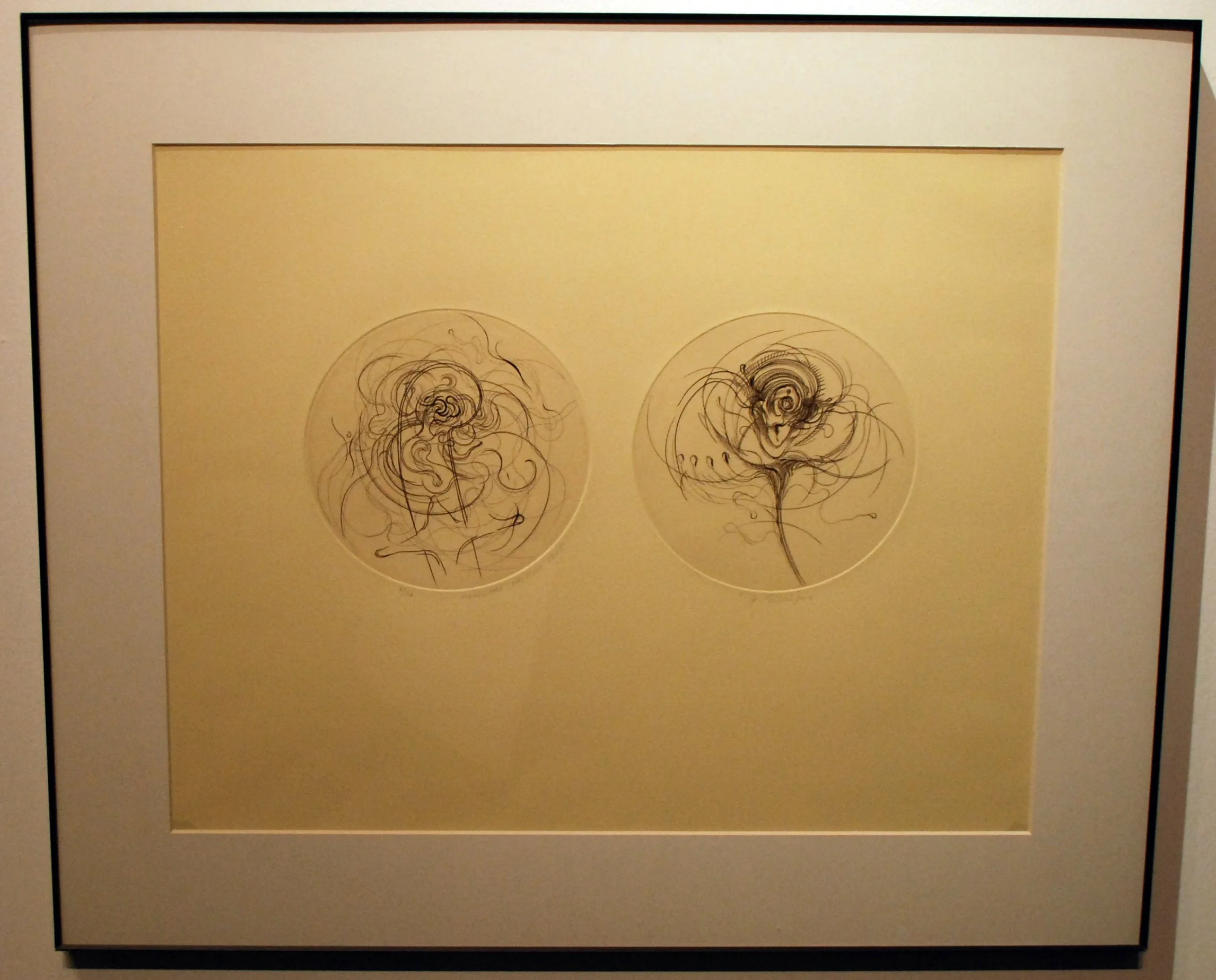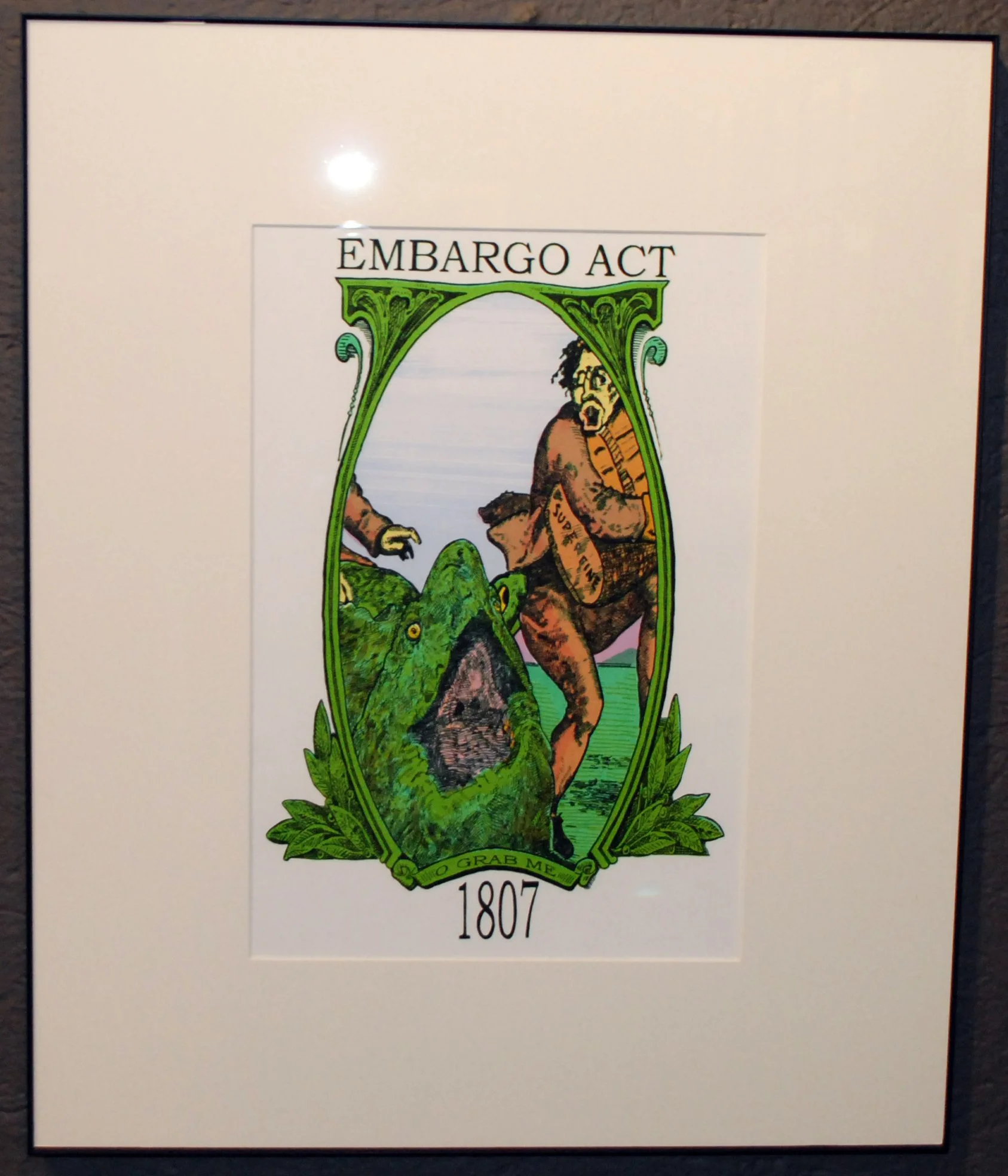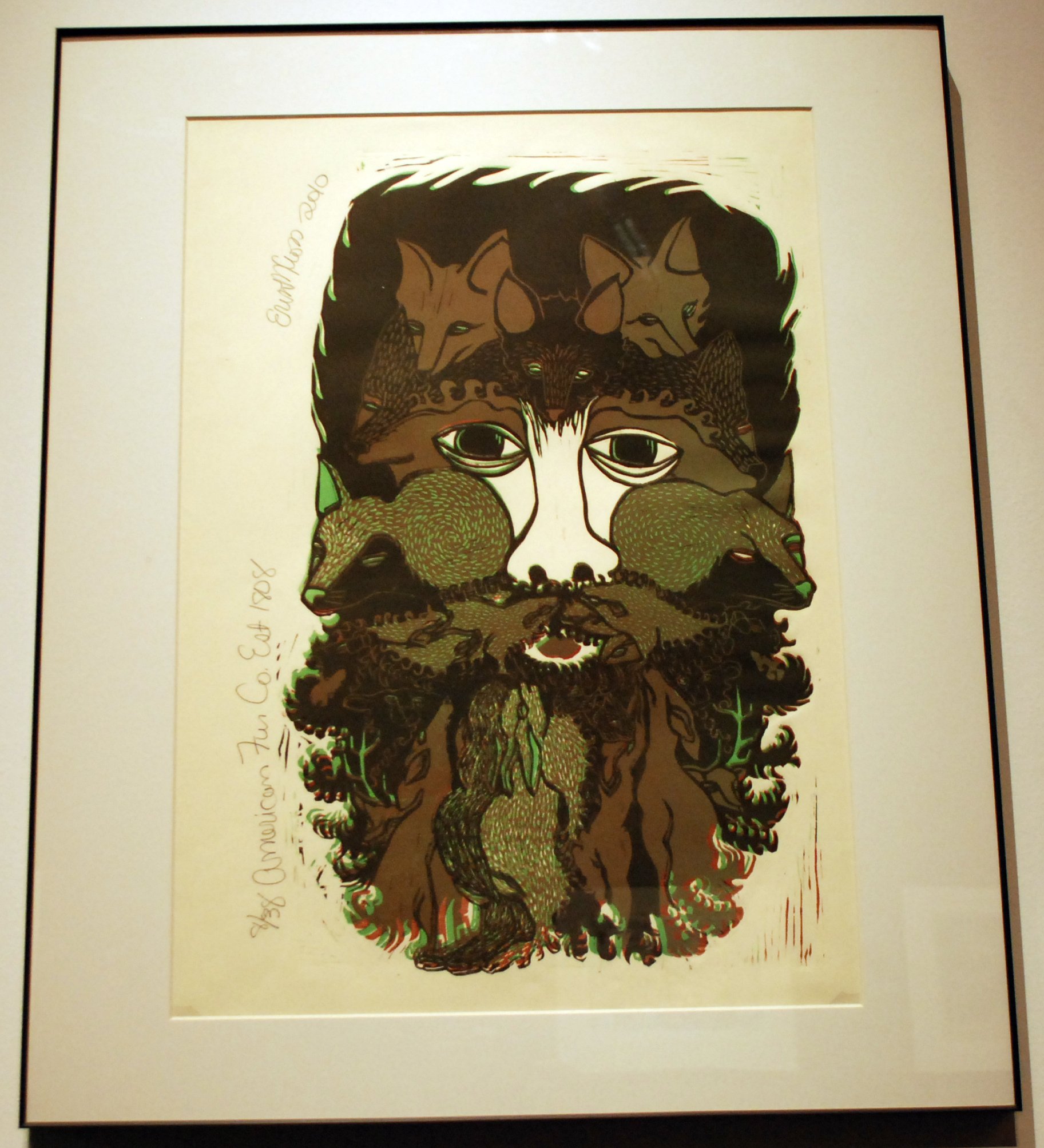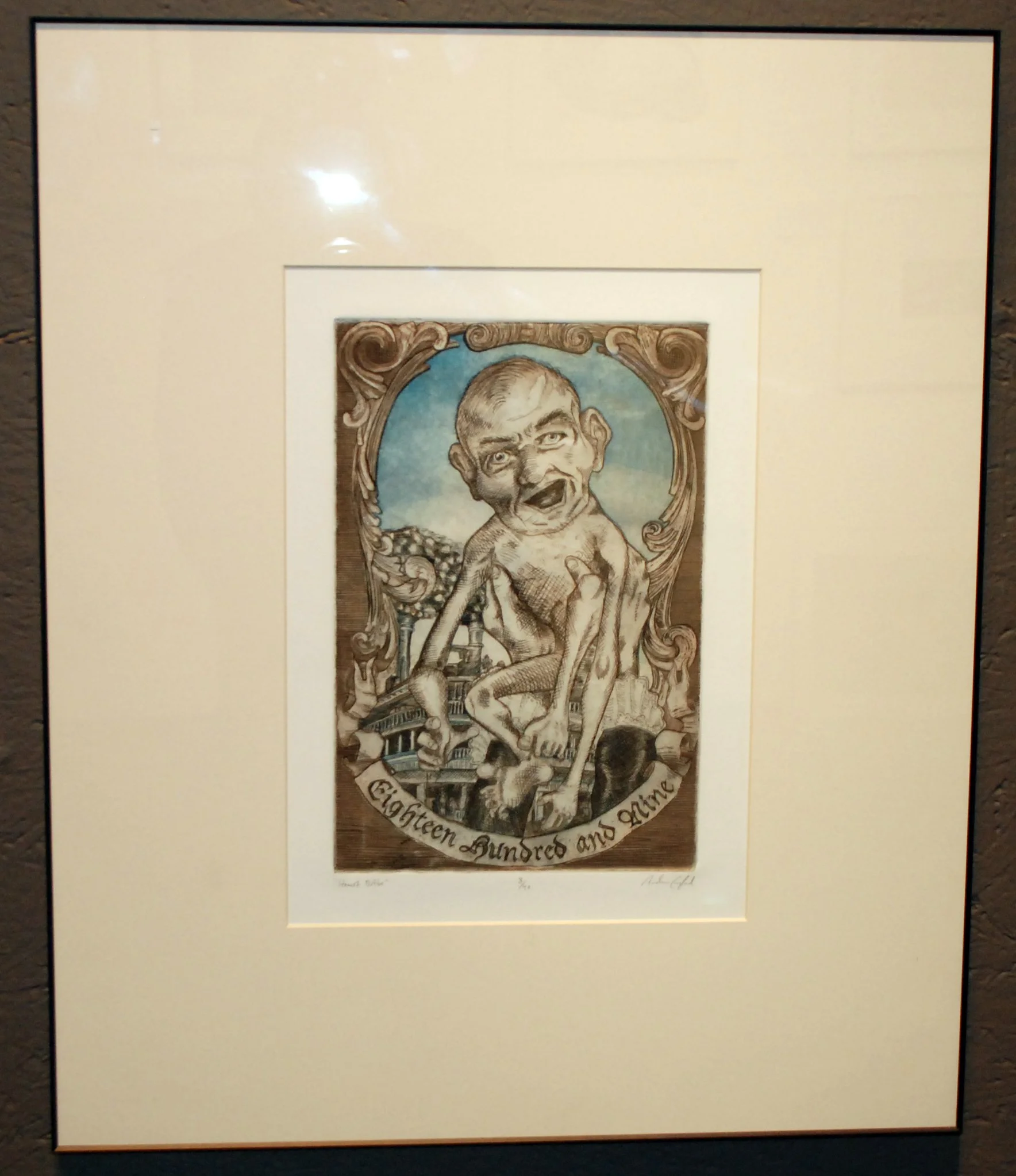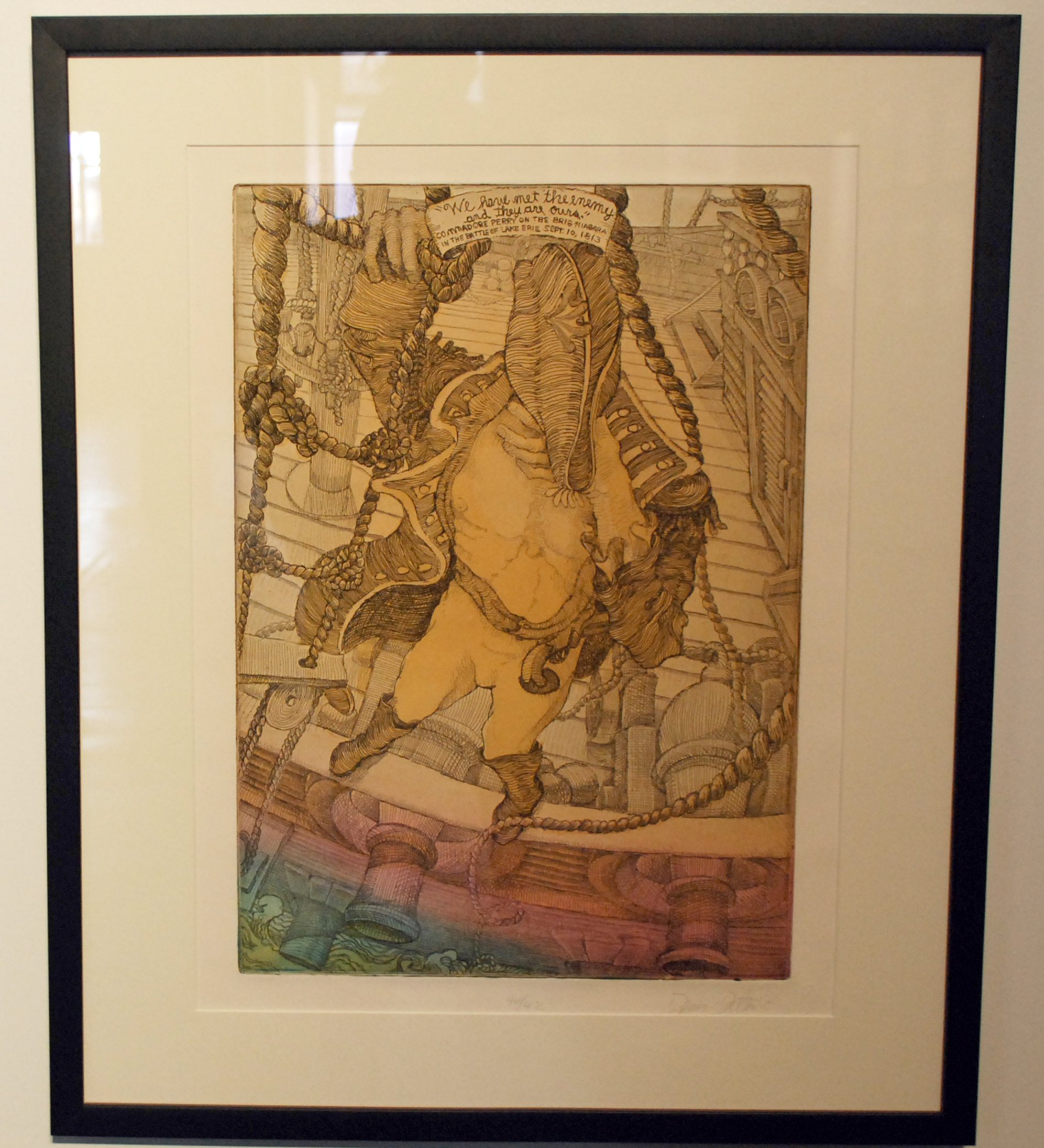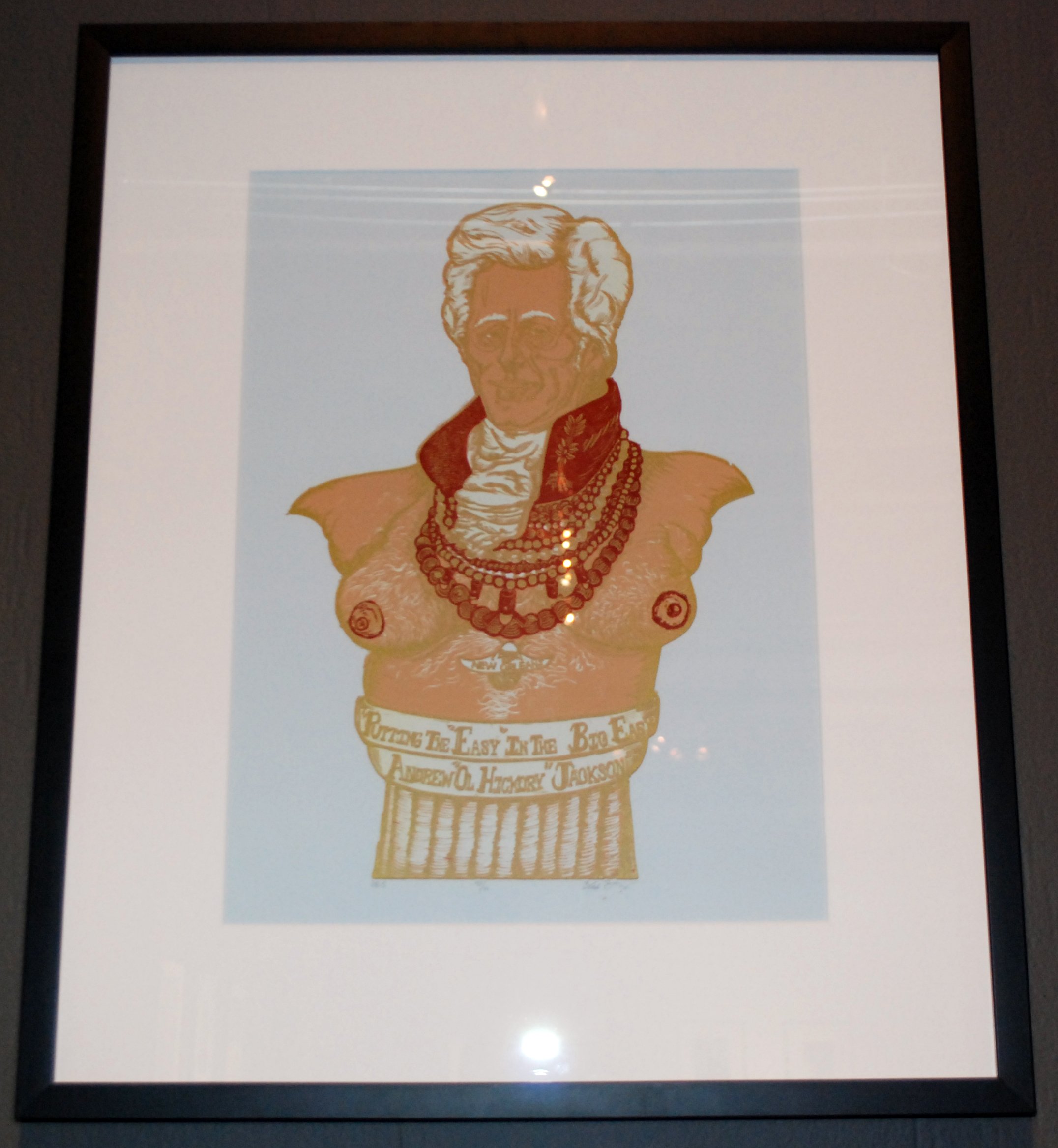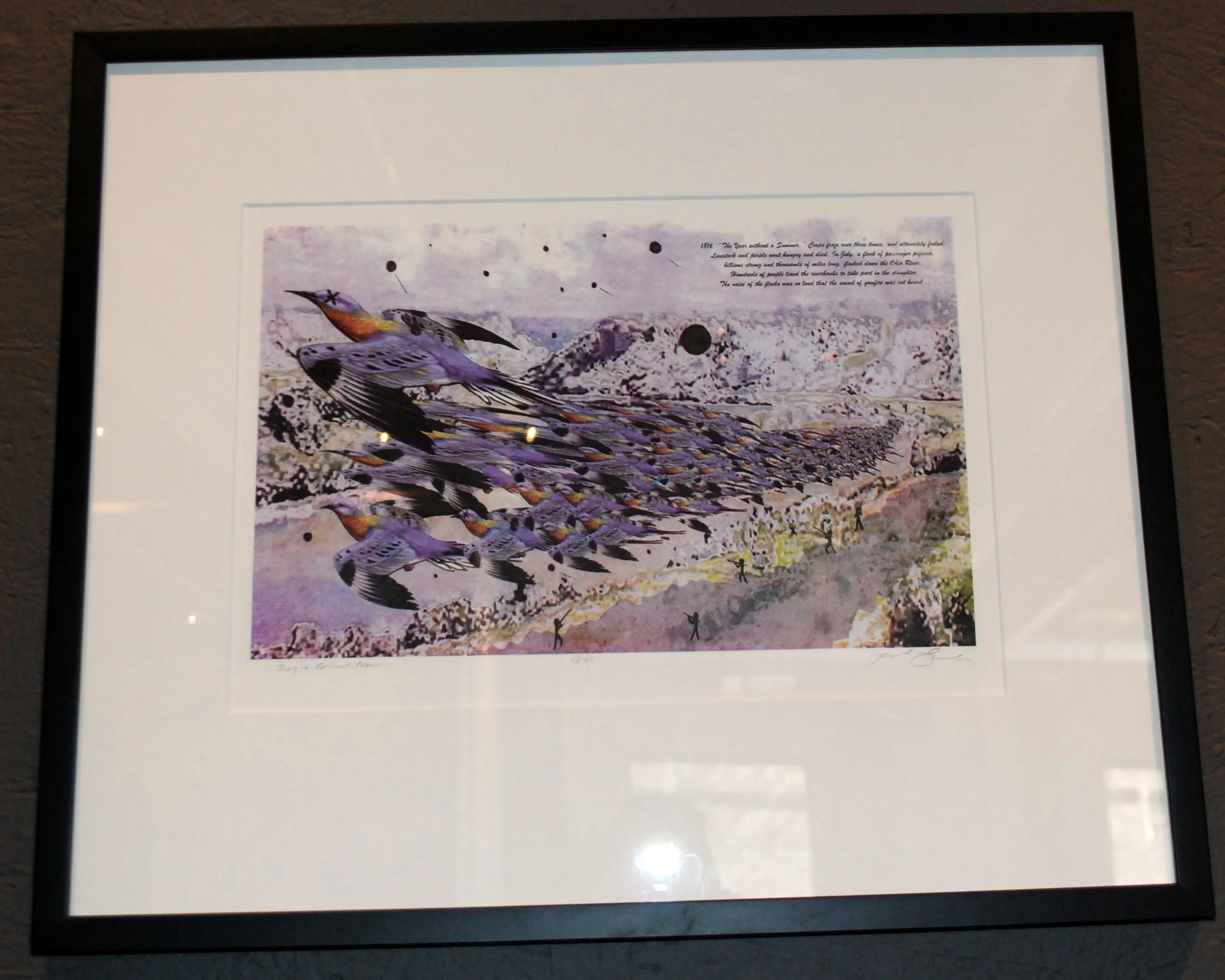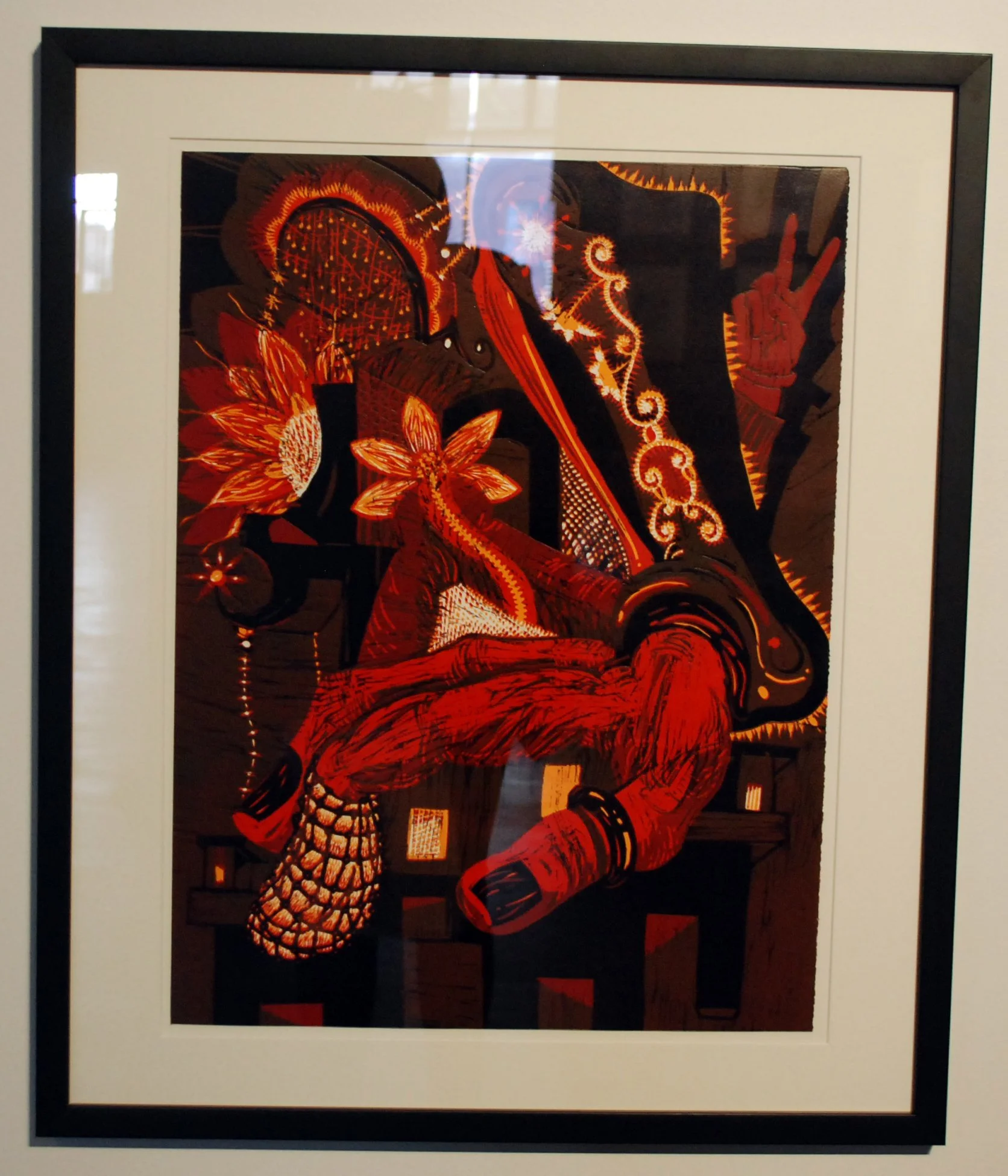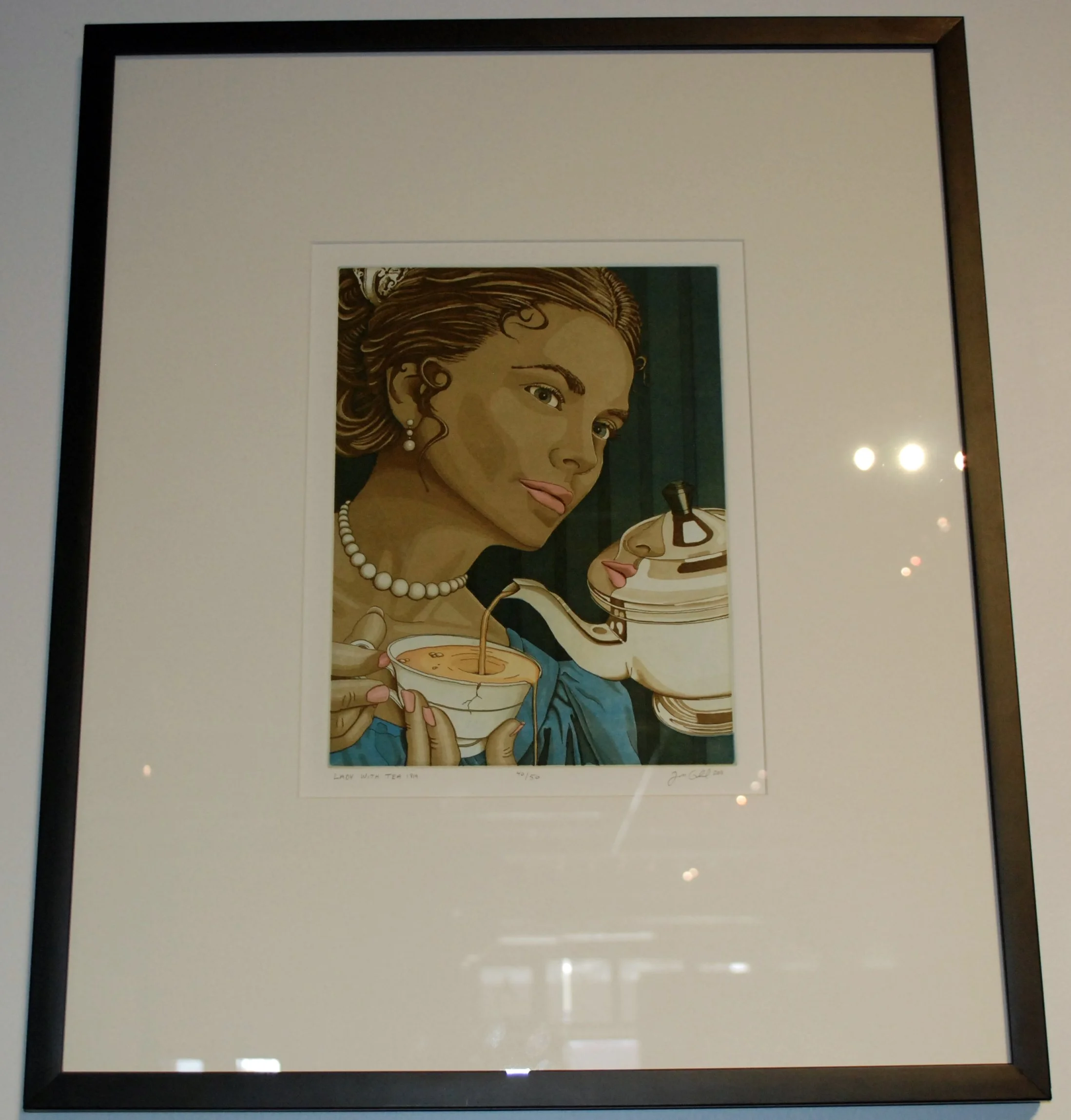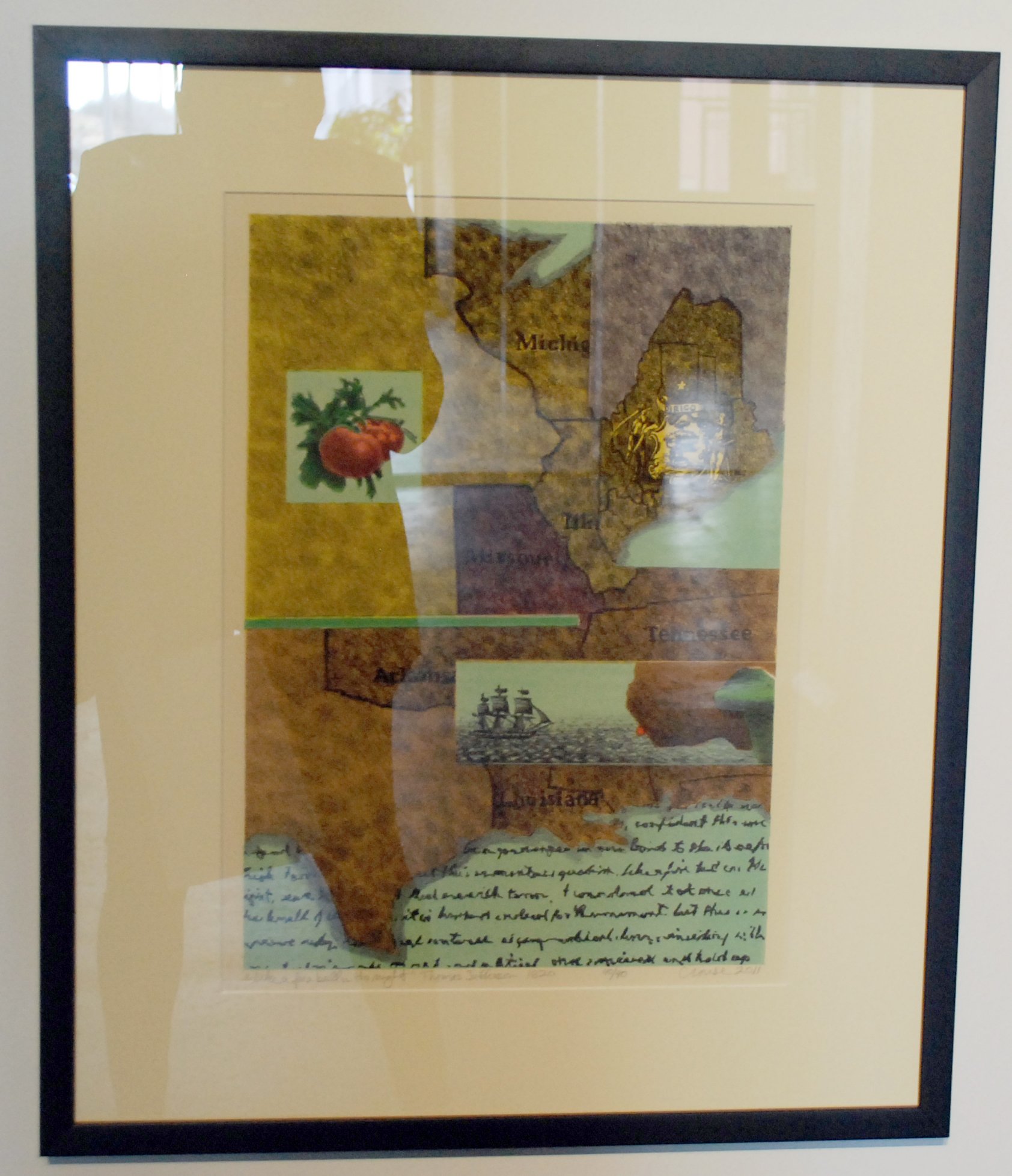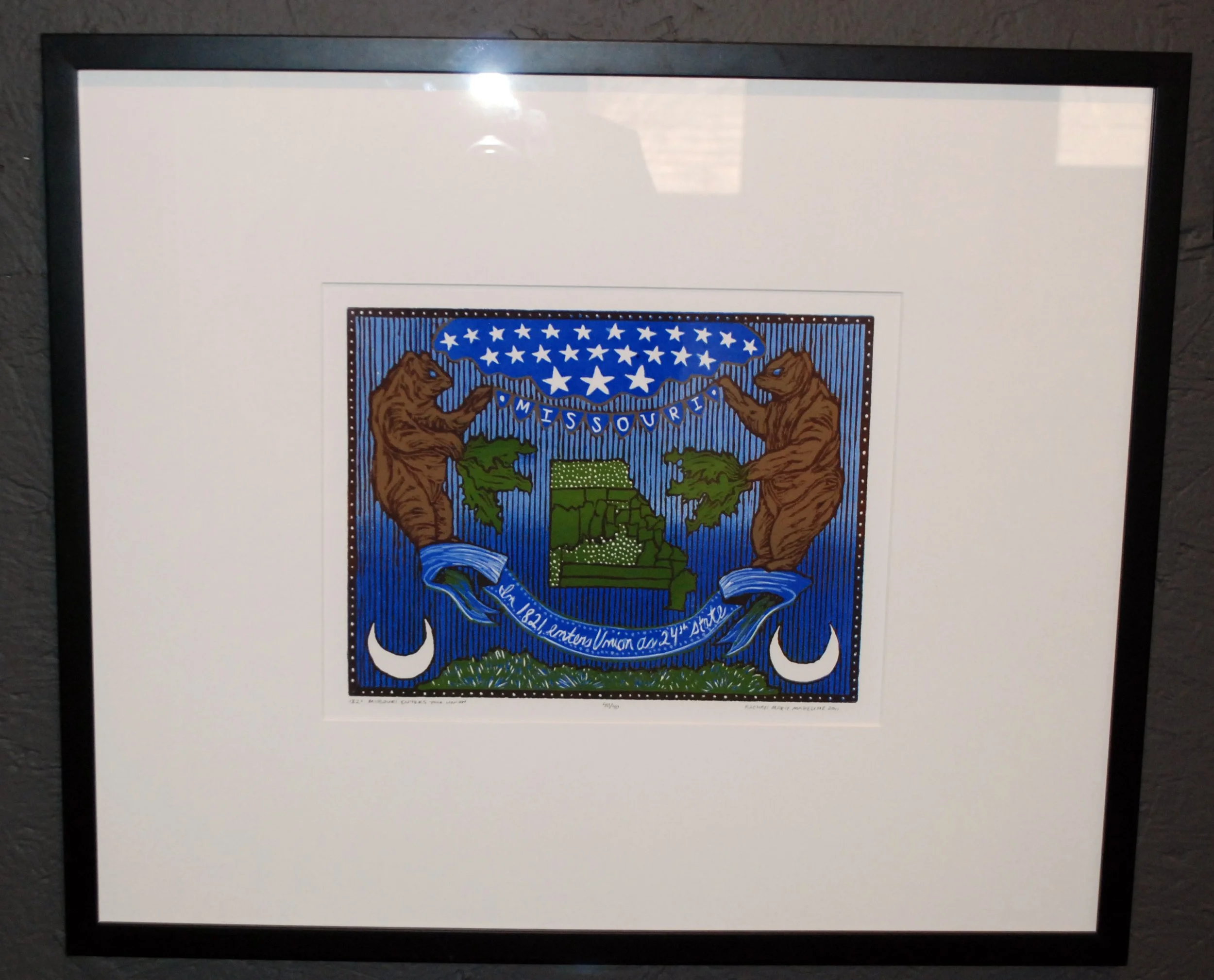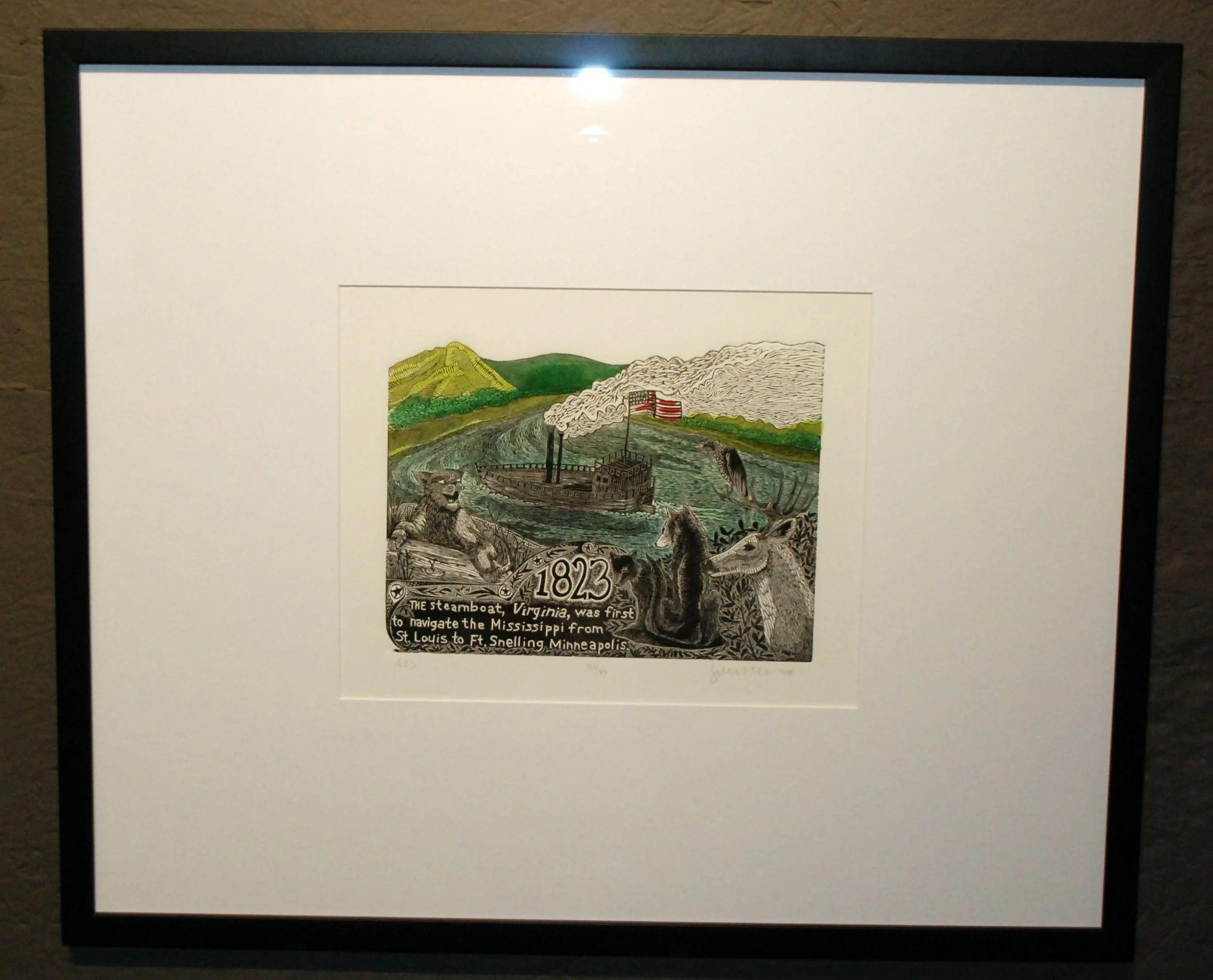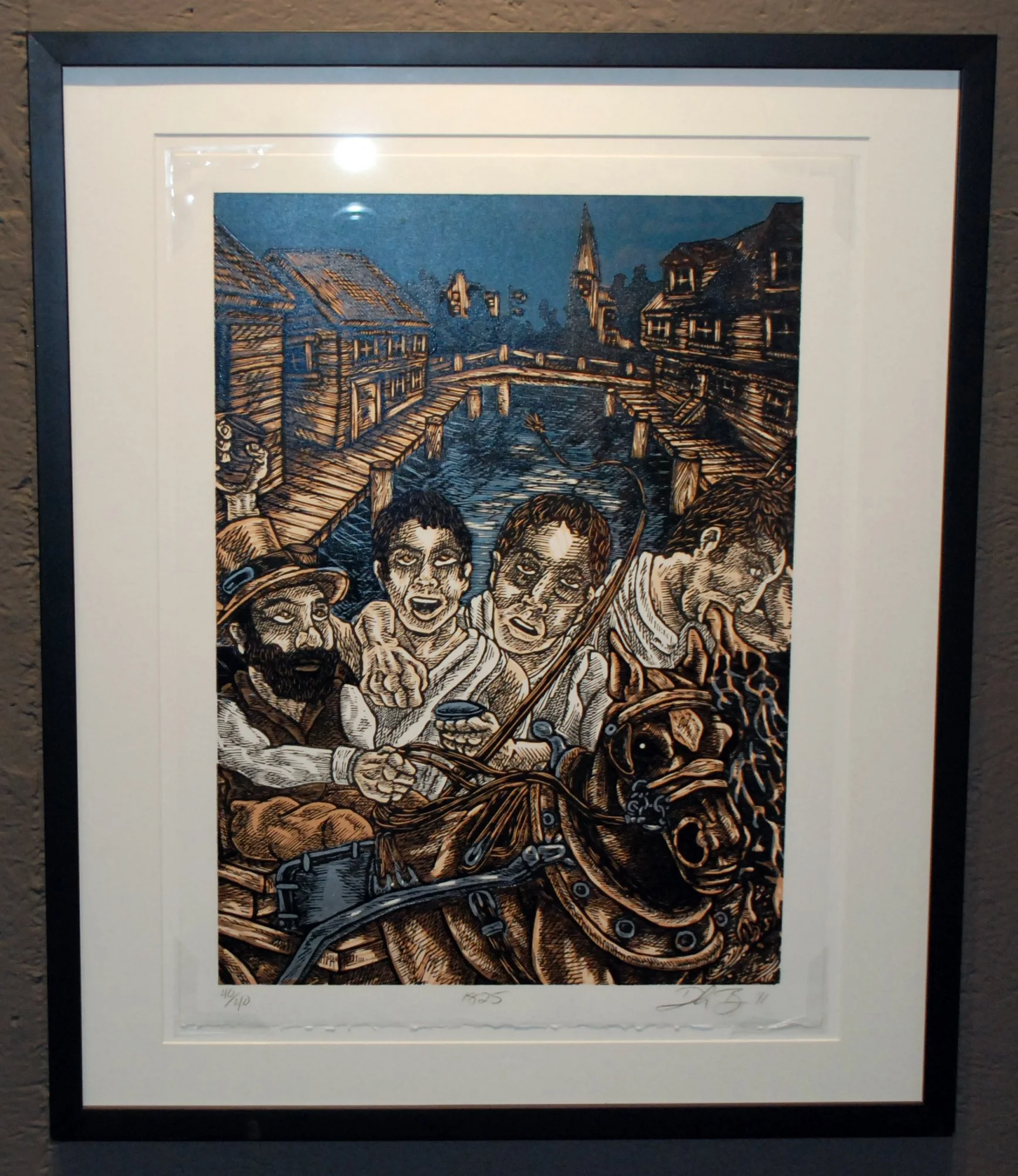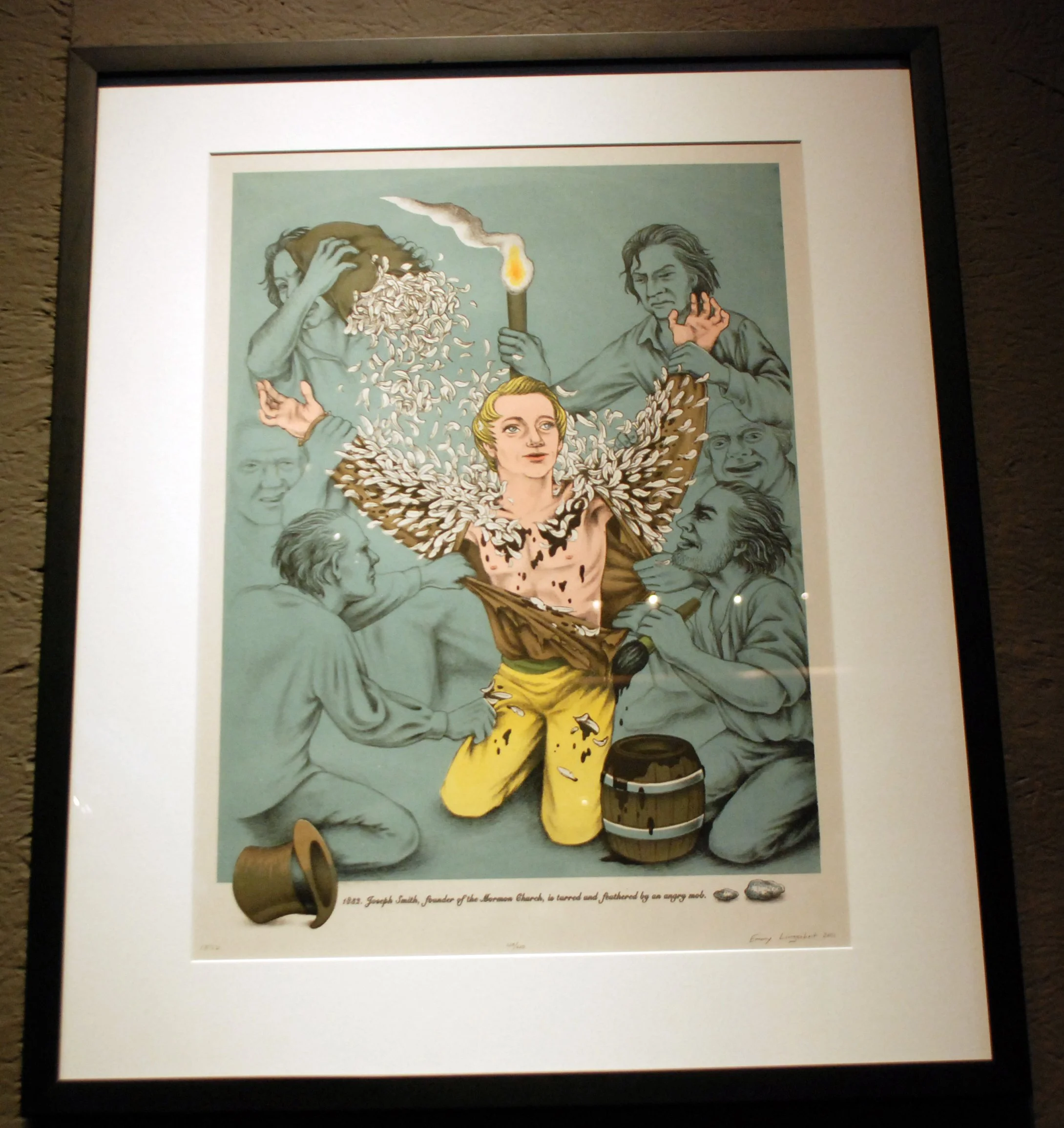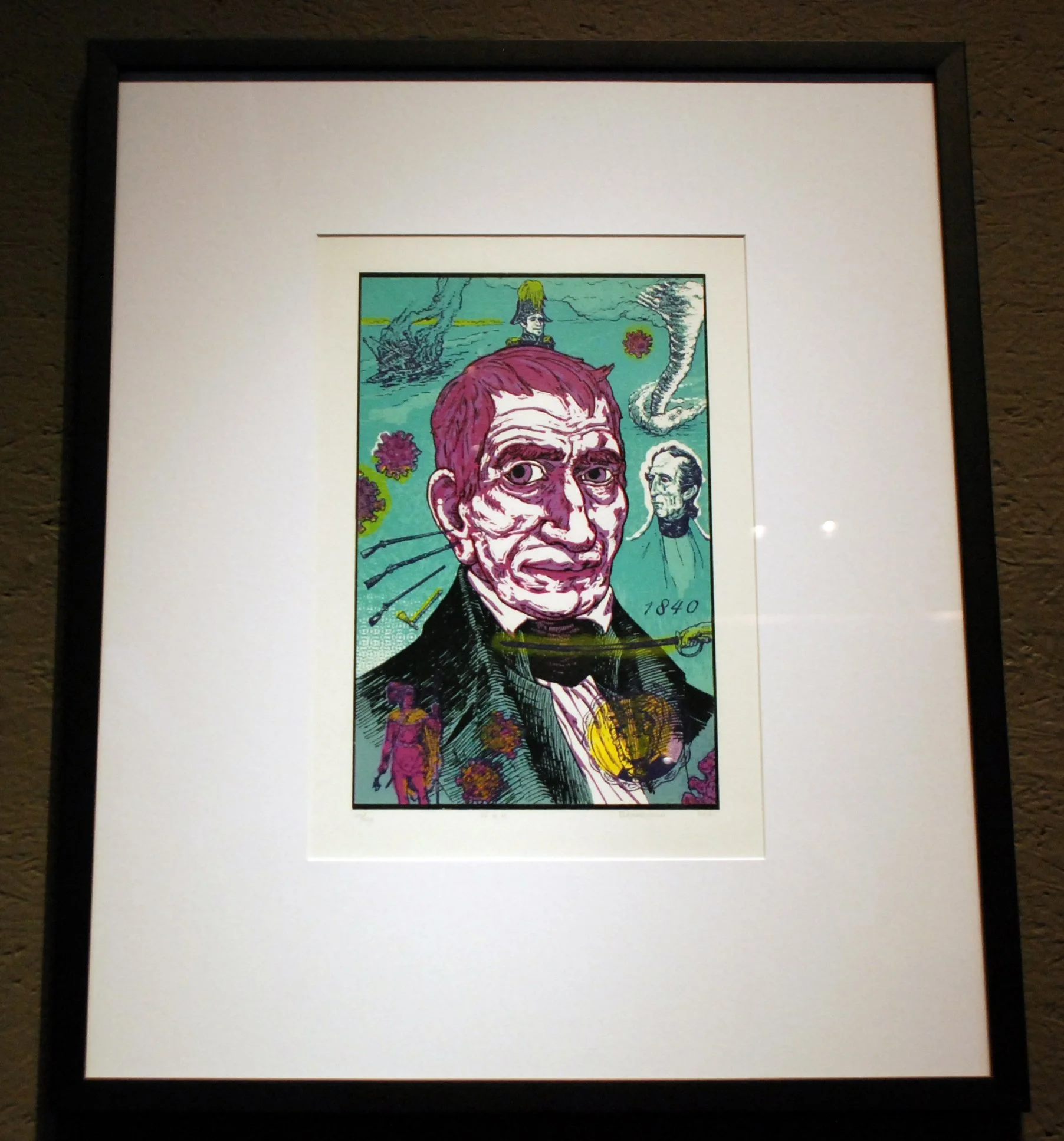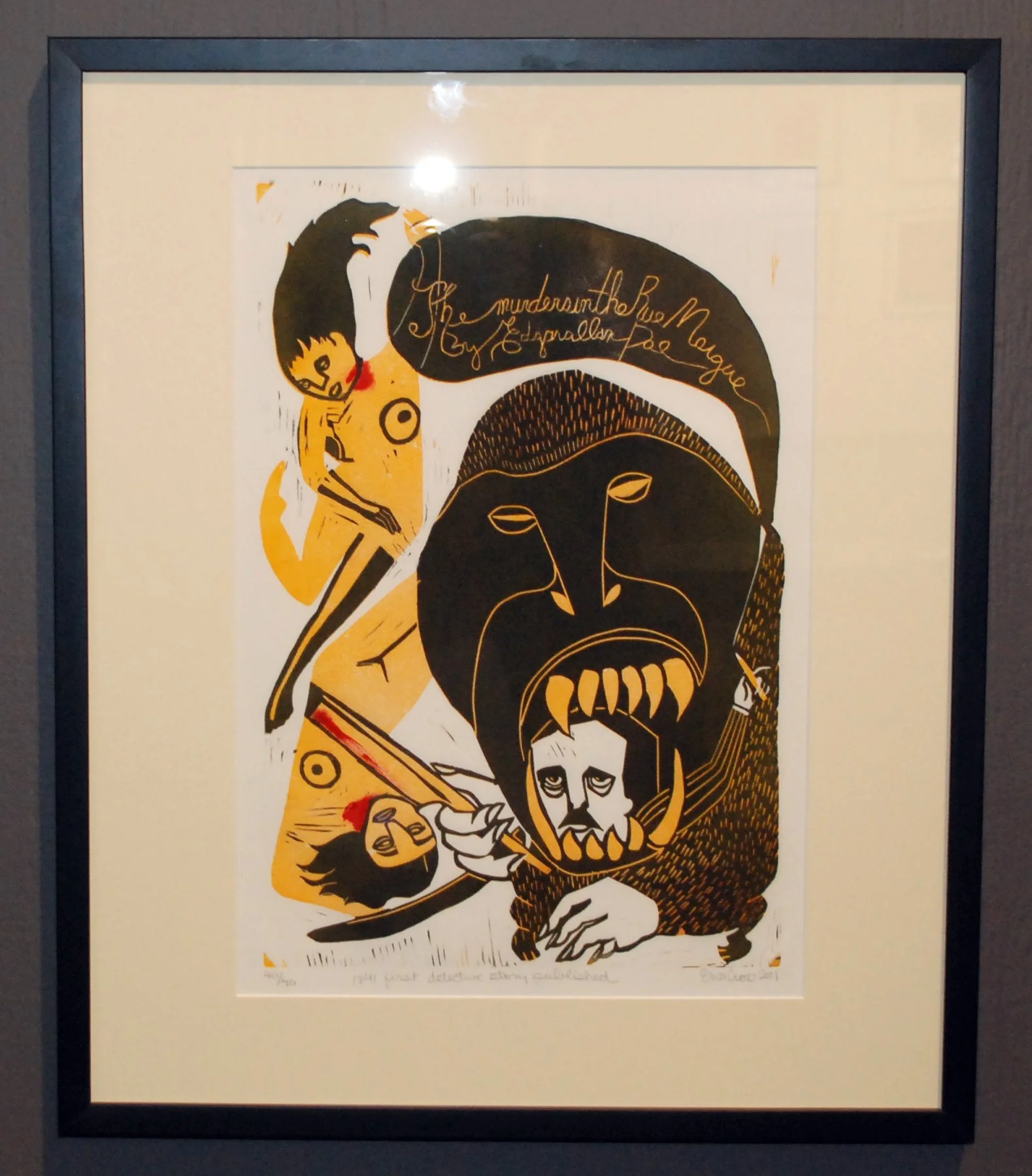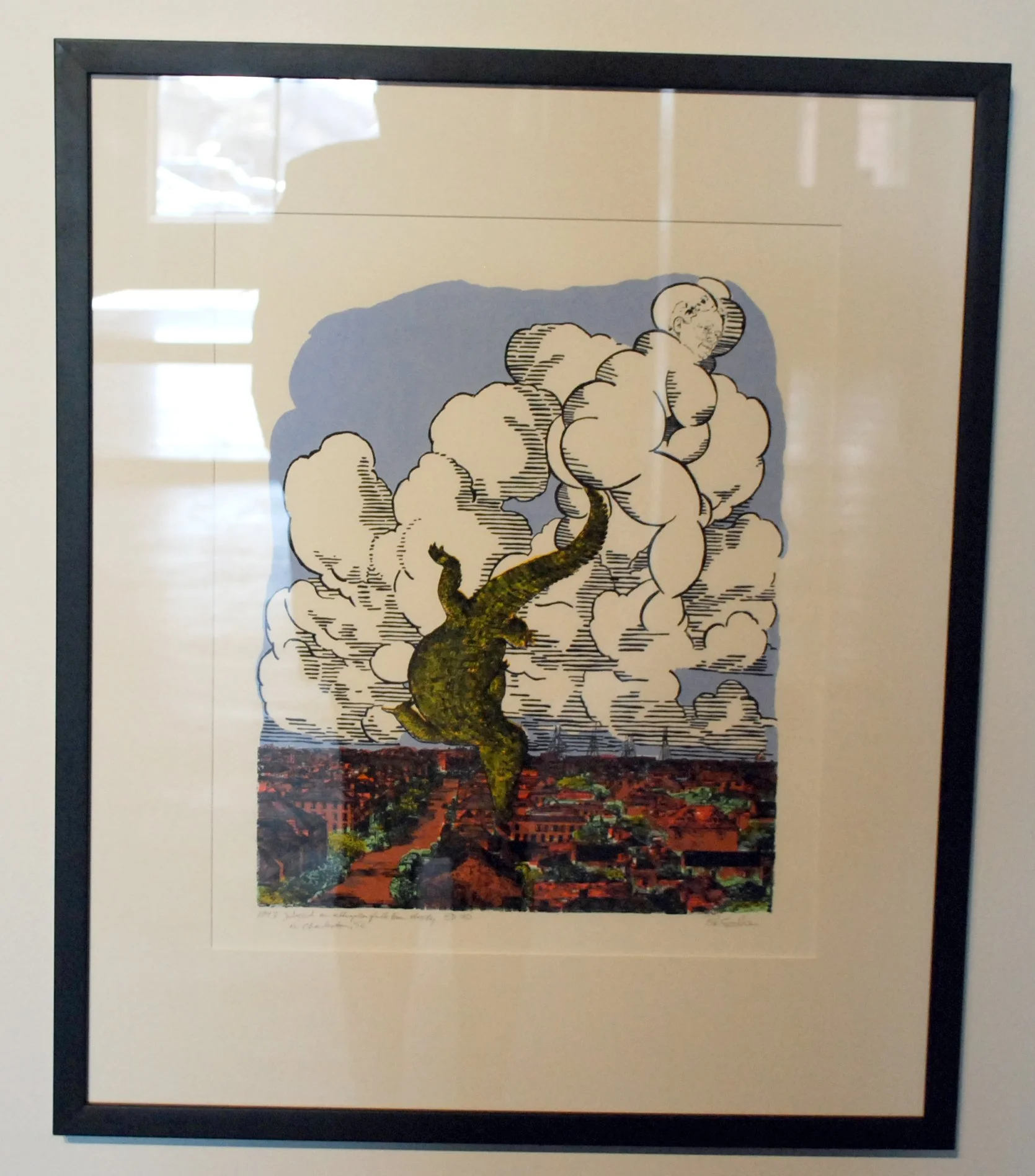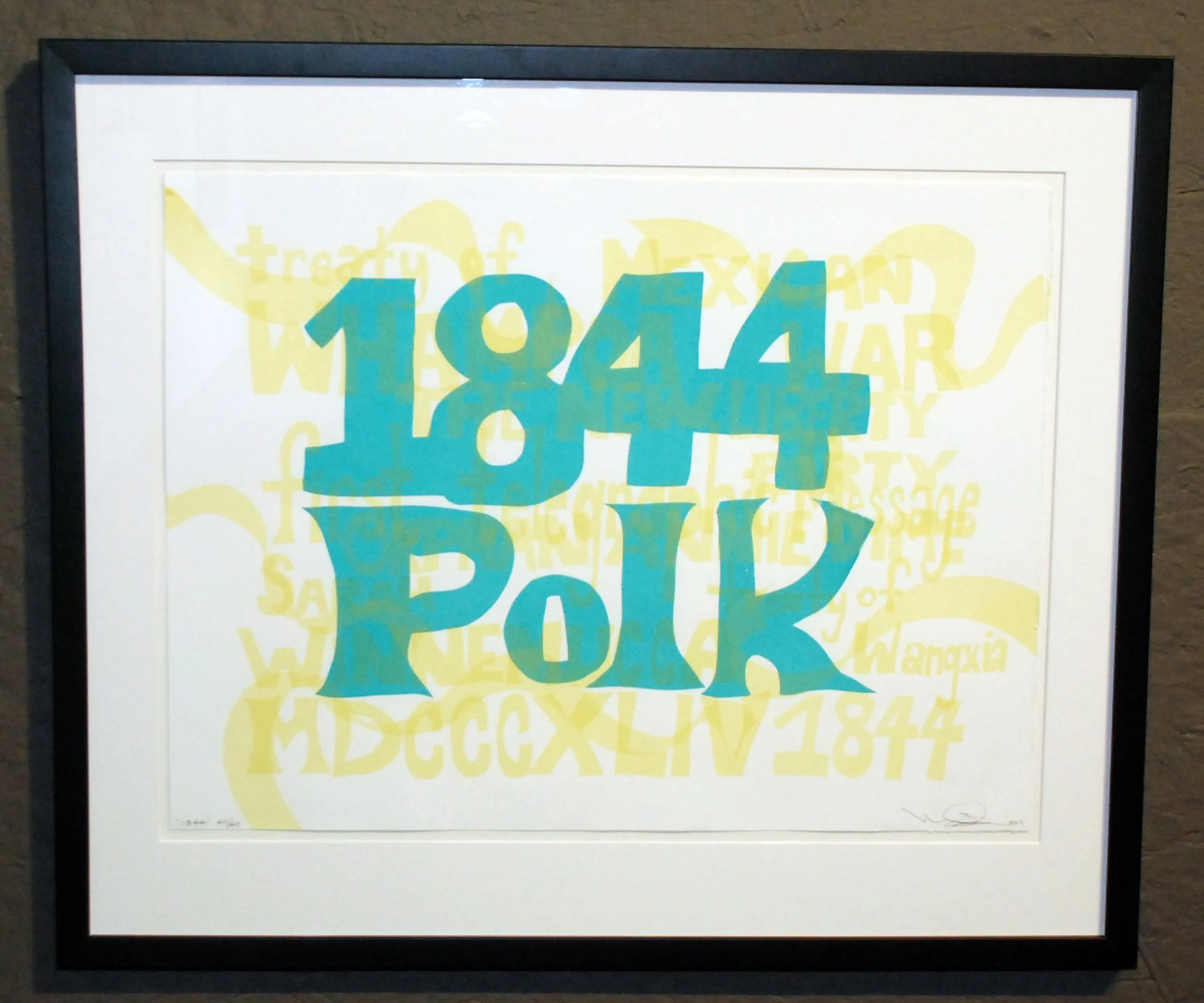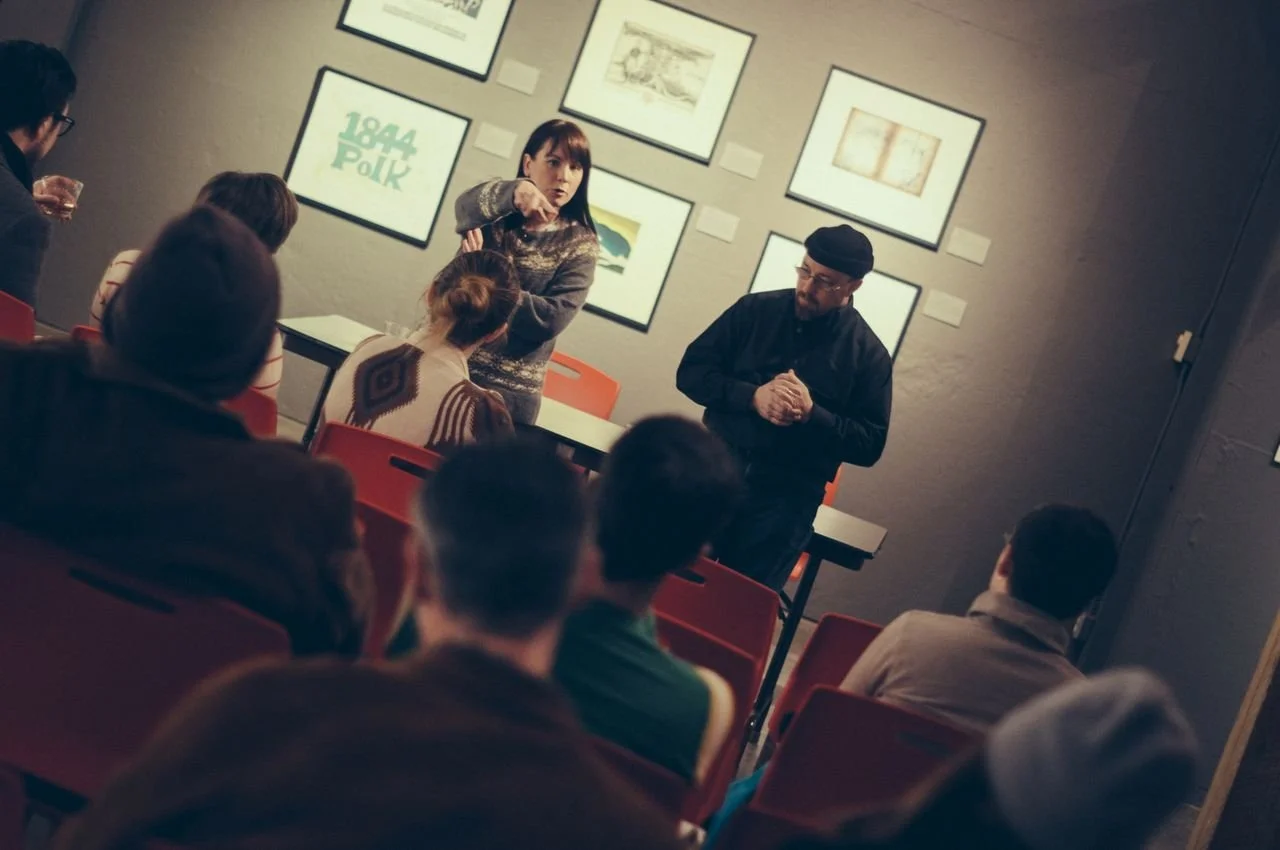ARTISTS: BRETT ANDERSON, L. BLAKSLEY, HEATHER BRYANT, ERIN CROSS, MATTHEW EGAN, ANDREW ENGLAND, JULES FLOSS, BRANDON GARDNER, RACHEL GARDNER, OSCAR J. GILLESPIE, JON GOEBEL, MATTHEW HOPSON-WALKER, CRYSTAL KANNEY, KURT KEMP, ANDREW KOSTEN, LYNWOOD KRENECK, CARRIE LINGSCHEIT, EMMY LINGSCHEIT, RACHAEL MADELINE, MICHELLE MARTIN, PETER MASSING, BENJAMIN MOREAU, JOHANNA MUELLER, CANDACE NICOL, MEGAN O'CONNOR, HEATHER O'HARA, BRANDON PETERSON, MATTHEW REBHOLZ, BLAKE SANDERS, BRANDON SANDERSON, LARRY SCHUH, KEVIN SHOOK, JEFFERY SIPPLE, MELANIE YAZZIE, BRYCE BRIMER, JAIME ALSABROOK & JOSH NEW
THROUGHOUT TIME, VISUAL ARTISTS HAVE COMMENTED ON SOCIAL ISSUES IN THEIR WORK. FROM THE PRINTS OF FRANCISCO DE GOYA, GARY TRUDEAU’S DOONESBURY, TO THE GRAFFITI ART OF BANKSY, ART AS SOCIAL COMMENTARY HAS TAKEN MANY FORMS. YESTERDAY, TODAY AND TOMORROW CONTAINS THIRTY-FIVE PRINTS CREATED BY OKLAHOMA ARTISTS THAT REPRESENT ONE YEAR BETWEEN 1810 AND 1843. THE COLLECTION IS AN AMAZING VARIETY OF PRINTS THAT ARE SATIRICAL, SERIOUS OR HUMOROUS. THESE WORKS VIVIDLY ADDRESS COMPLEX PROBLEMS AND ISSUES IN RECENT AMERICAN HISTORY, CULTURE AND SOCIETY. THEY ALSO SERVE AS A SPRINGBOARD FOR CONFRONTING ISSUES THAT CONTINUE TO FACE AMERICA TODAY.
THE U.S. HISTORY IN PRINT, VOLUMES I, (1774-1809) AND II, (1810-1845)
America in Ink, Vol. 1 and Vol. 2, are the first two installments of a multi-year national portfolio project, The History of the United States. This idea was the creation of printmaker Brandon Gardner. Gardner asked 35 fine art printmakers to create prints based on thirty-year cycles in American history; the portfolios will eventually cover all years from 1774 to the present. The completed project will consist of seven installments of prints. Each artist is assigned a year and researches an event or person, famous or not, to use as inspiration for his or her print. The image can be of a specific event or an overview of that entire year; it can convey any number of emotions and can be satirical, serious, humorous or otherwise thought-provoking. The participating printmakers are well-knwon artists from throughout the United States who work in a wide variety of print techniques, including lithography, intaglio etching, monoprints, woodcut and screen printing. The results are visually delightful and educational as well.
ACCOMPANYING THESE PRINTS WILL BE AN INSTALLATION BY BRYCE BRIMER. IN THE SPIRIT OF BRINGING AWARENESS TO SOCIAL ISSUES, BRIMER CHOSE TO ADDRESS THE TOPIC OF HOMELESSNESS IN TULSA AS AN INSTALLATION CREATED FOR THE "OH, TULSA" EXHIBITION. BRIMER IS REMINDING US THAT OUR CITIES, REGARDLESS OF LOCATION, ARE "HOME TO MANY WHO DON'T HAVE A PERMANENT STRUCTURE TO CALL HOME." HE DESIGNED THIS 12-FOOT-TALL PIECE TO EXPLORE THE DICHOTOMY BETWEEN THE VERY RICH AND THE VERY POOR. AT THE FRONT OF THE PIECE STAND SOME OF THE ICONIC DOWNTOWN BUILDINGS OF TULSA AND AT THE BACK IS A REPLICA OF A SHANTY THAT SERVES AS A DOORWAY INTO THE ARTWORK. BRIMER CREATED THE ARTWORK WITH INDIVIDUALS FROM THE TULSA DAY CARE CENTER FOR THE HOMELESS.
Homeless in Tulsa, Bryce Brimer
Tulsa artist, Bryce Brimer, designed this piece to explore the dichotomy between the very rich and the very poor in our city. The front of the structure conveys some of the architectural, capitalistic and philanthropic pillars of Tulsa. Oil barons, bankers and businessmen are housed in tall, proud structures that anchor the city's skyline. Connecting this world of wealth and privilege to another reality of poverty, homelessness and need are panels painted by clients at the Day Center for the Homeless. At the back of the piece is a replica of a shanty that serves as a gateway into the structure. Viewers can interact with the piece by entering the corrugated steel and wood doorway. Once inside, they are invited to learn more about homelessness in Tulsa and reflect on what home means to them. Photographers, Jaime Alsabrook and Josh New, took the photographs.
This piece was a joint effort with the individuals from the Day Center. The clients (including children, teens, adults and elderly) were supplied with paint and materials by the artist and asked to share their thoughts on the subjects of home and Tulsa. the artist spent four weeks working with Day Center clients and was impressed by their positive attitudes and artwork. These individuals and families, many facing almost unimaginable hardships, chose to revel in the beauty and joy of creating instead of dwelling on their situation. The very process of creating the intermediary panels had an impact on all involved.
It is the hope of the artist that this piece will remind viewers that Tulsa is home to many who don't have a permanent structure to call home.







